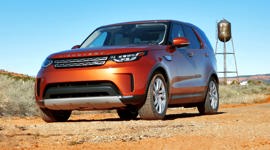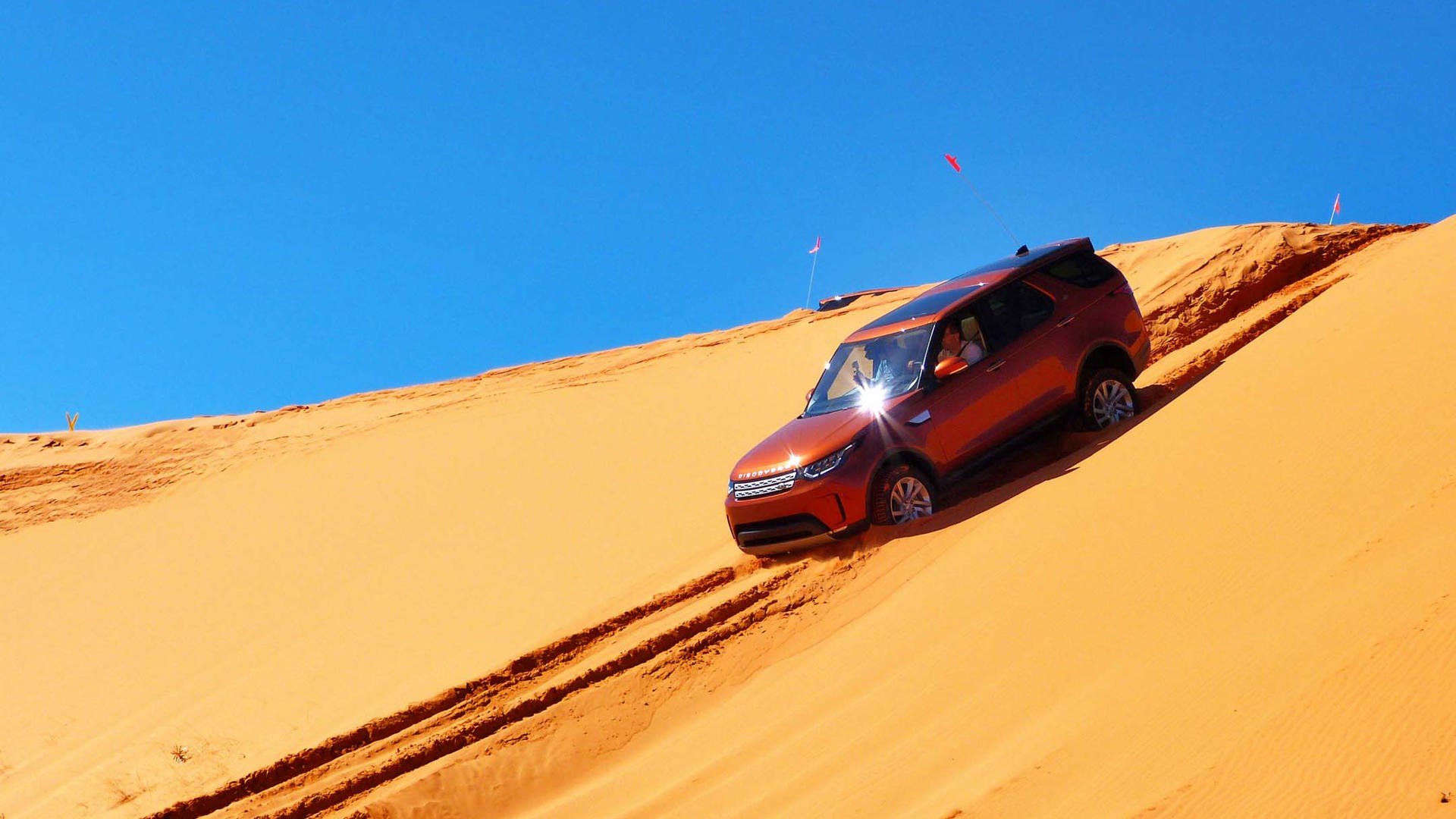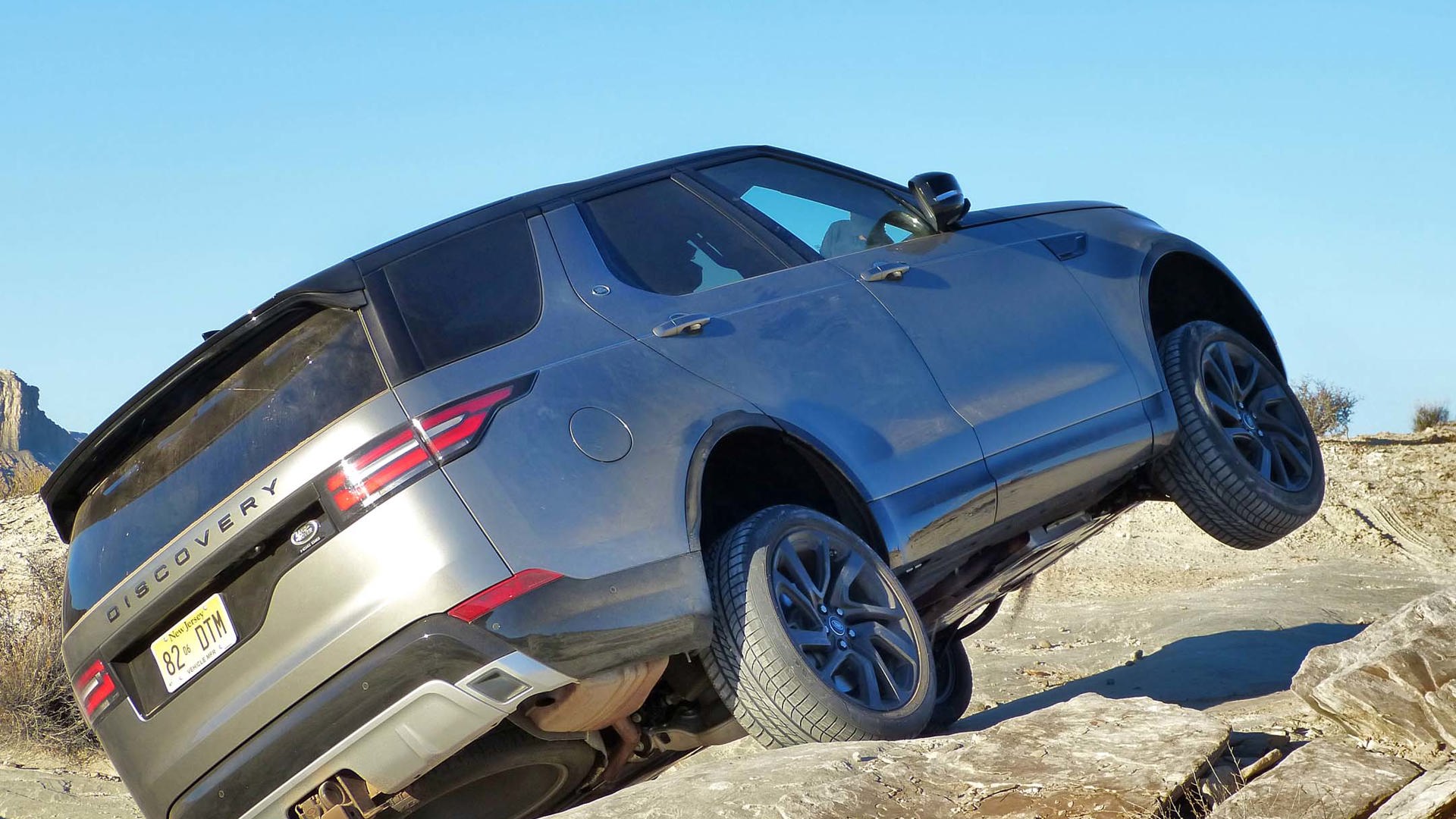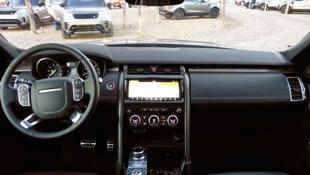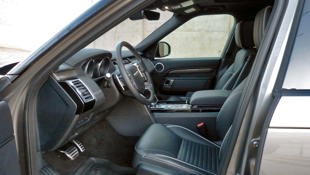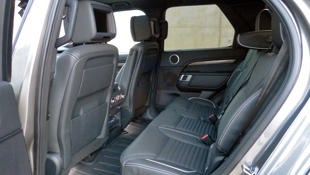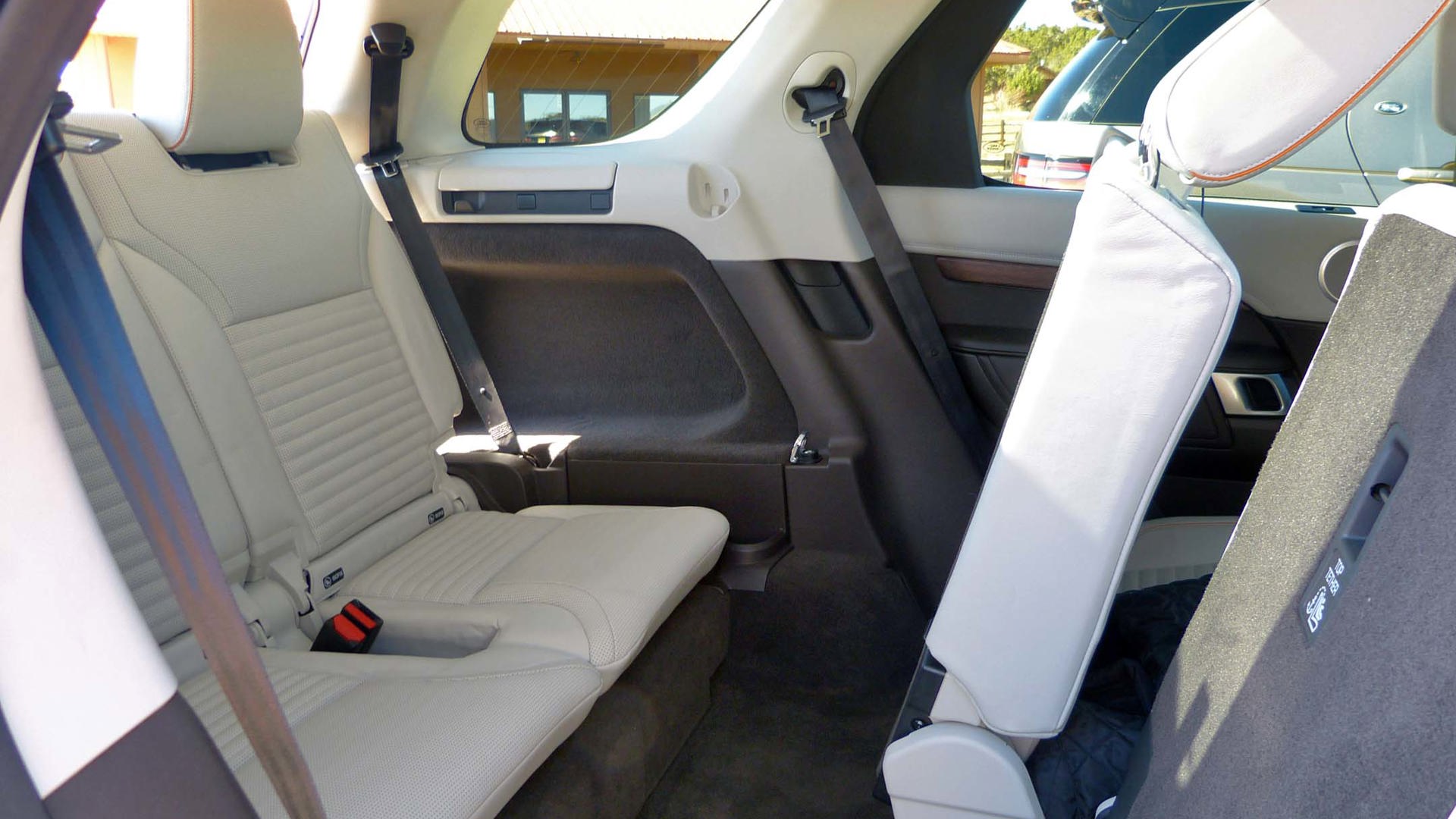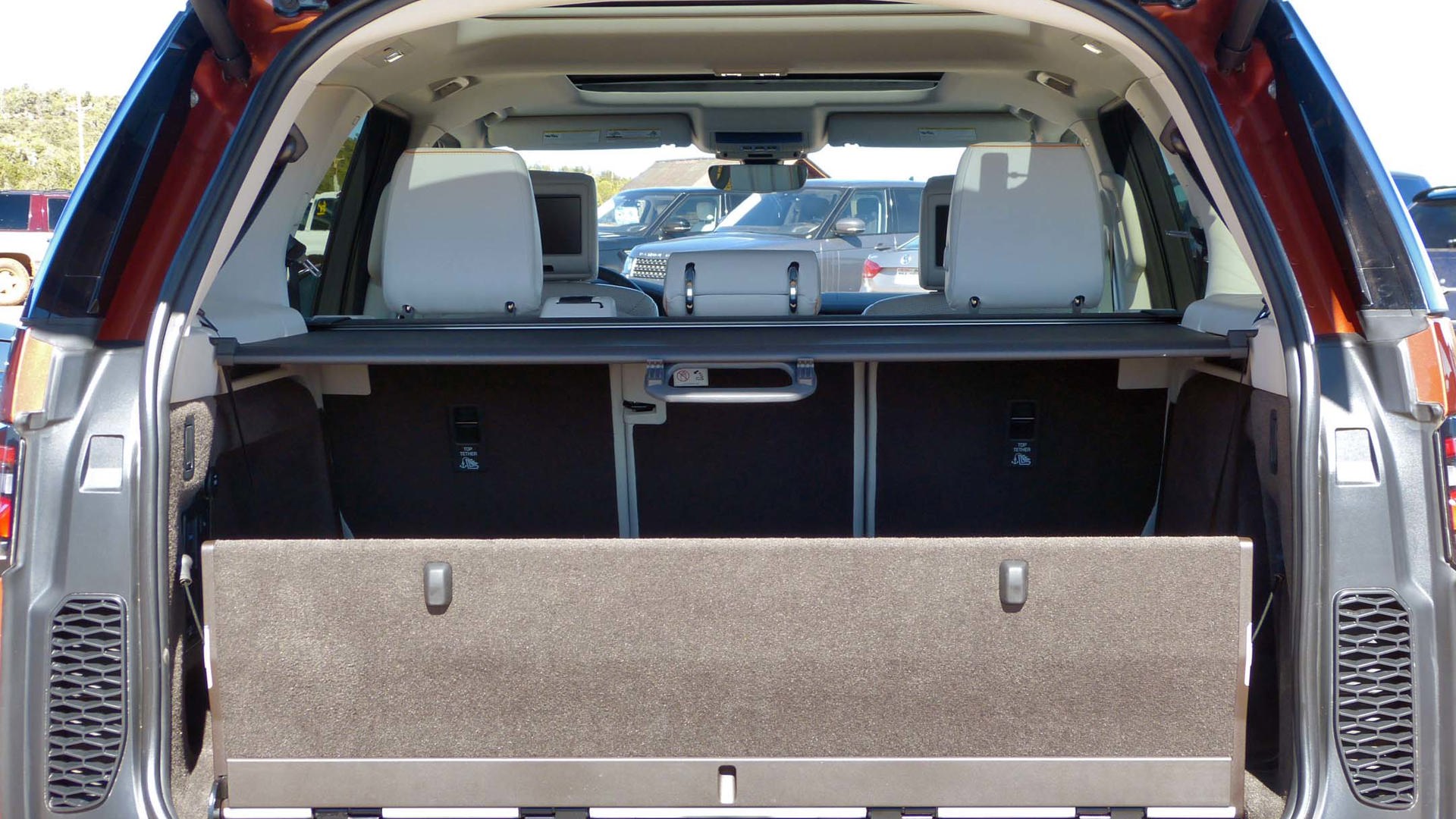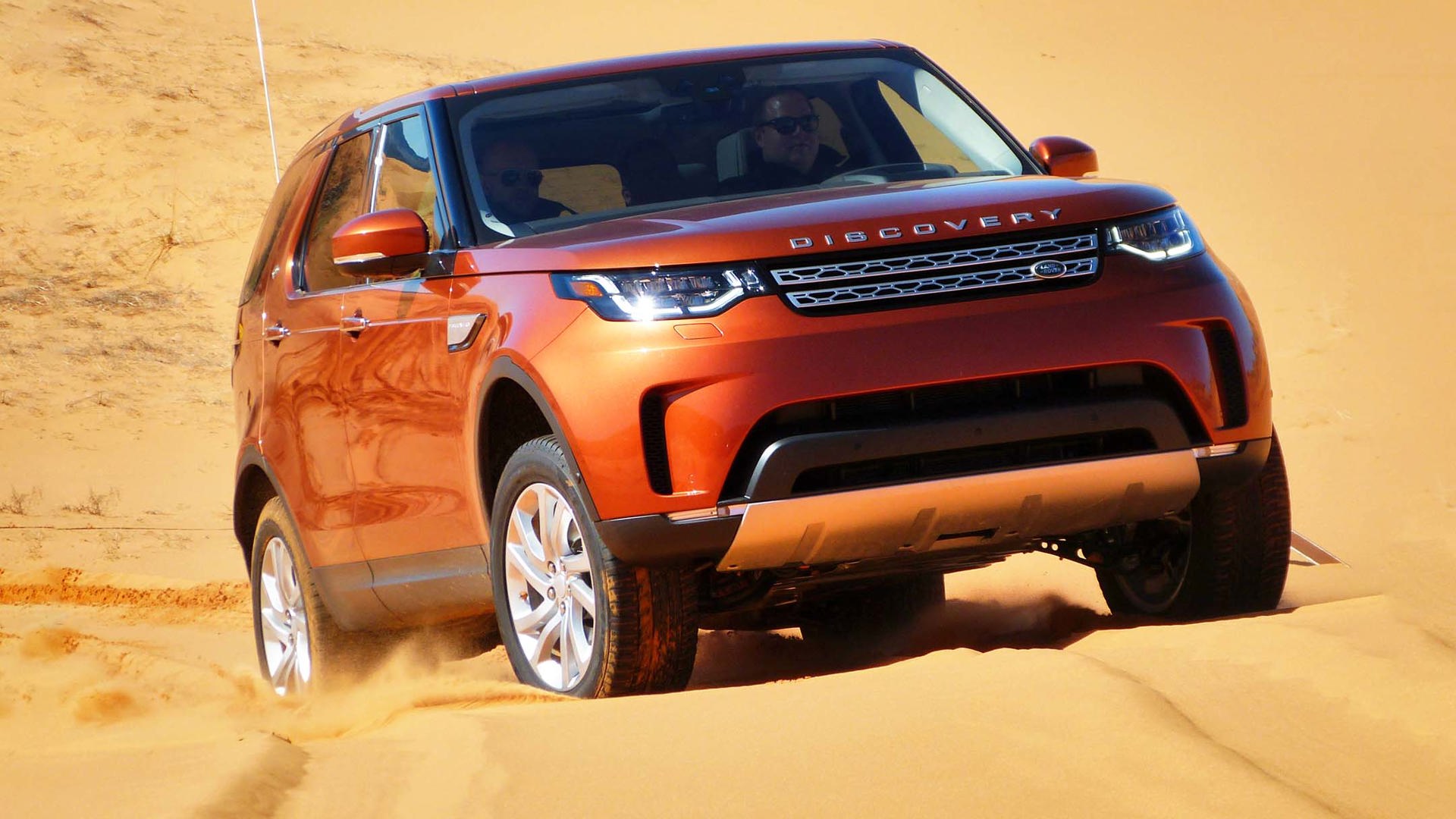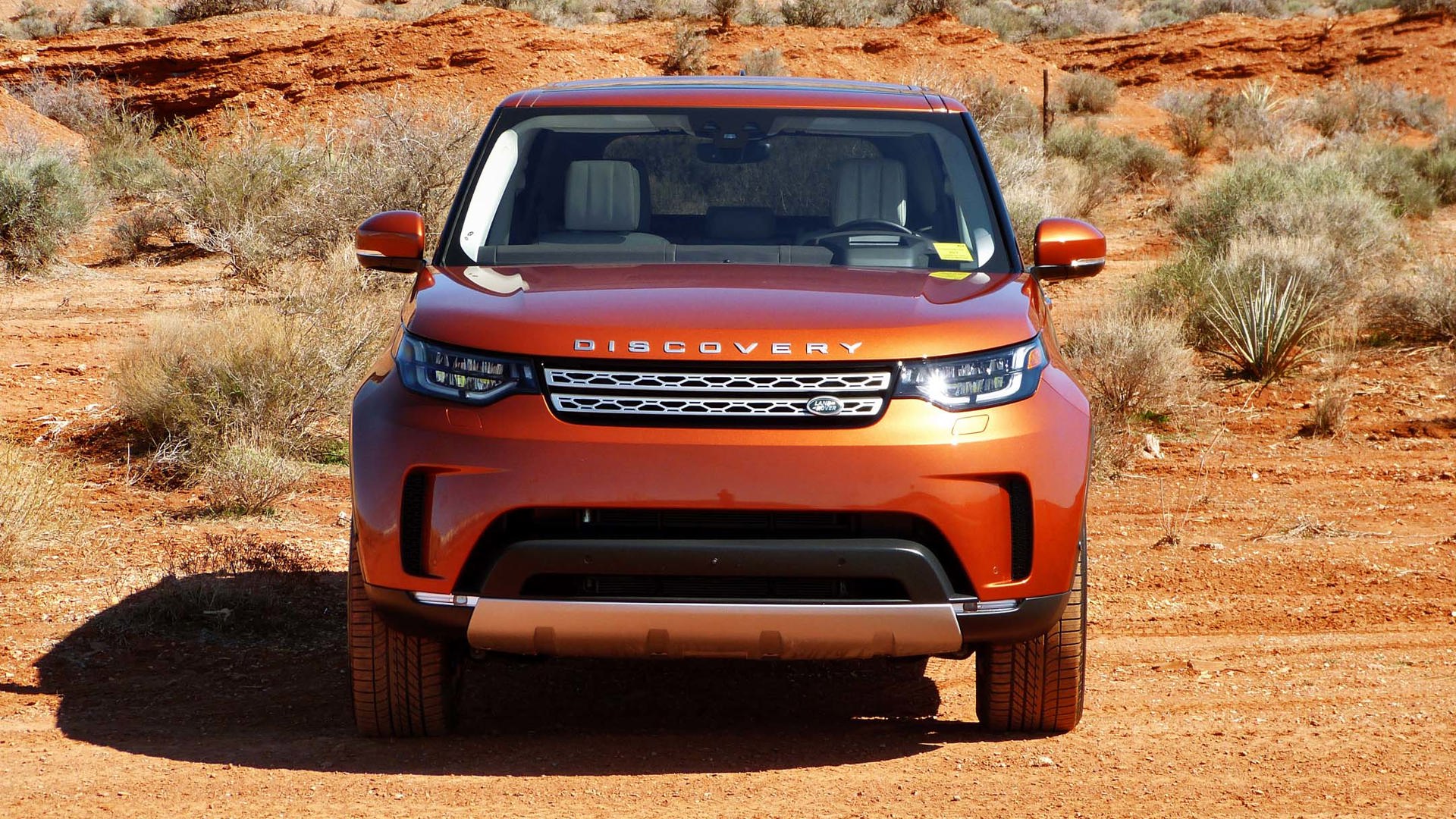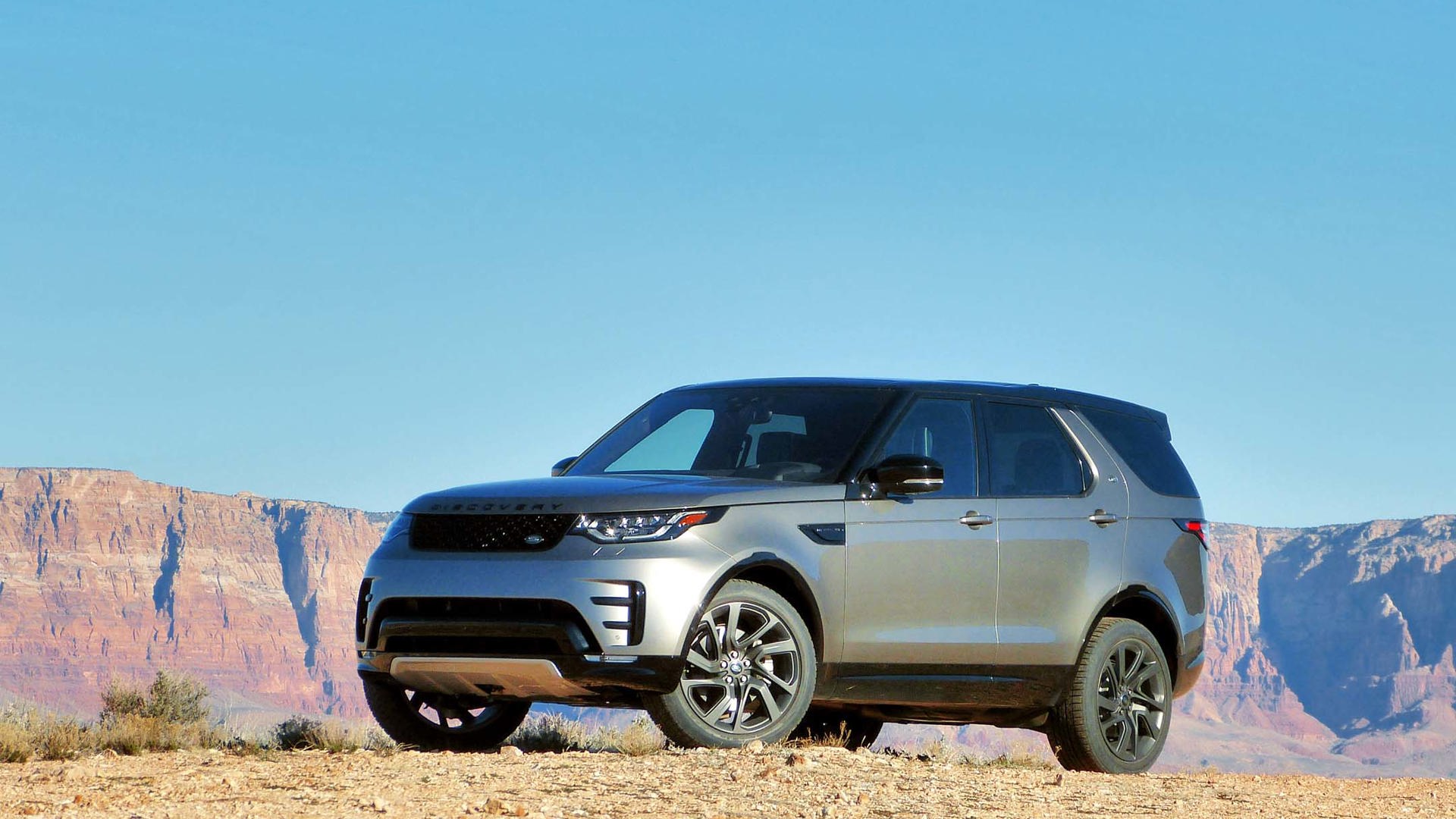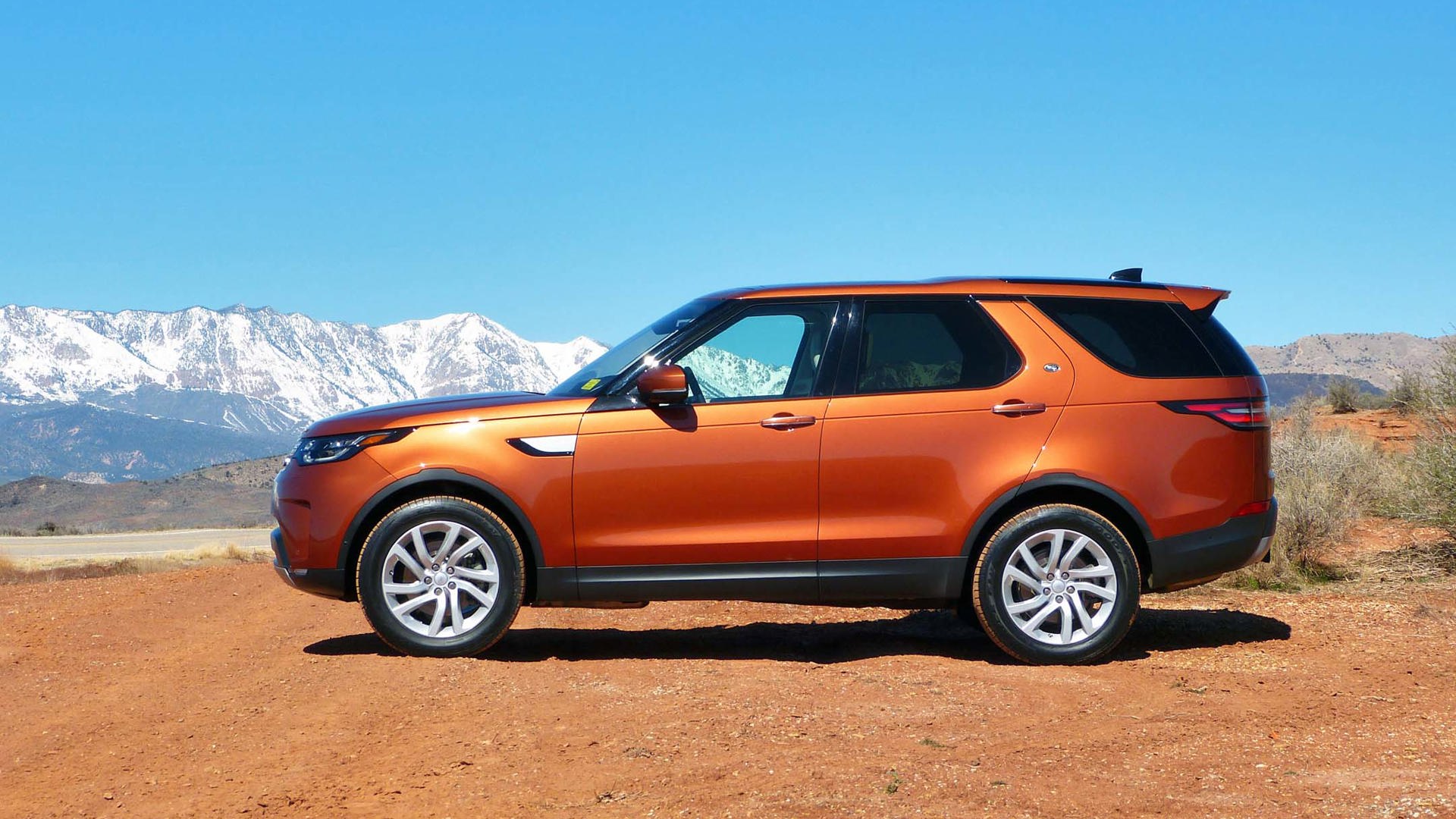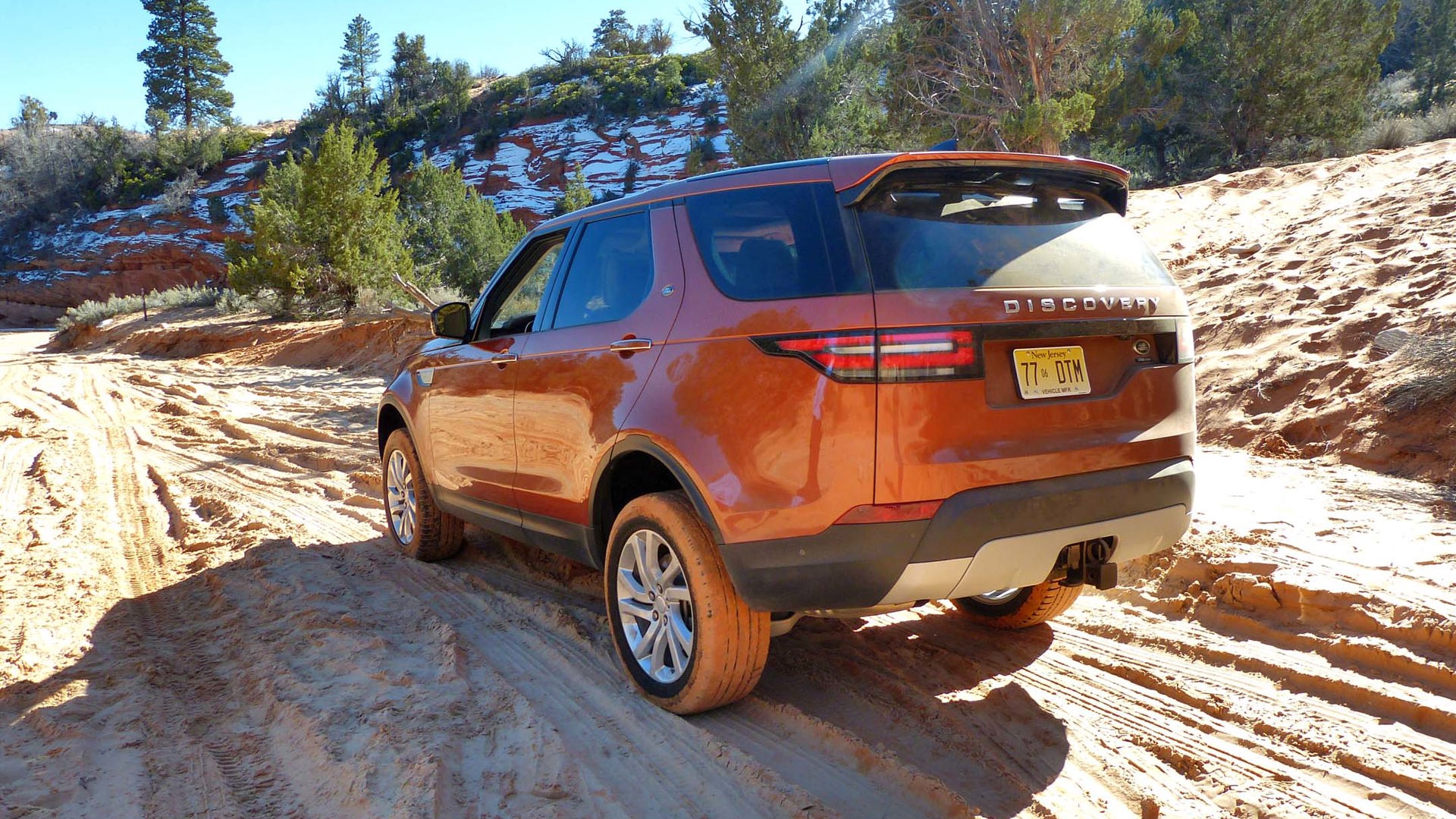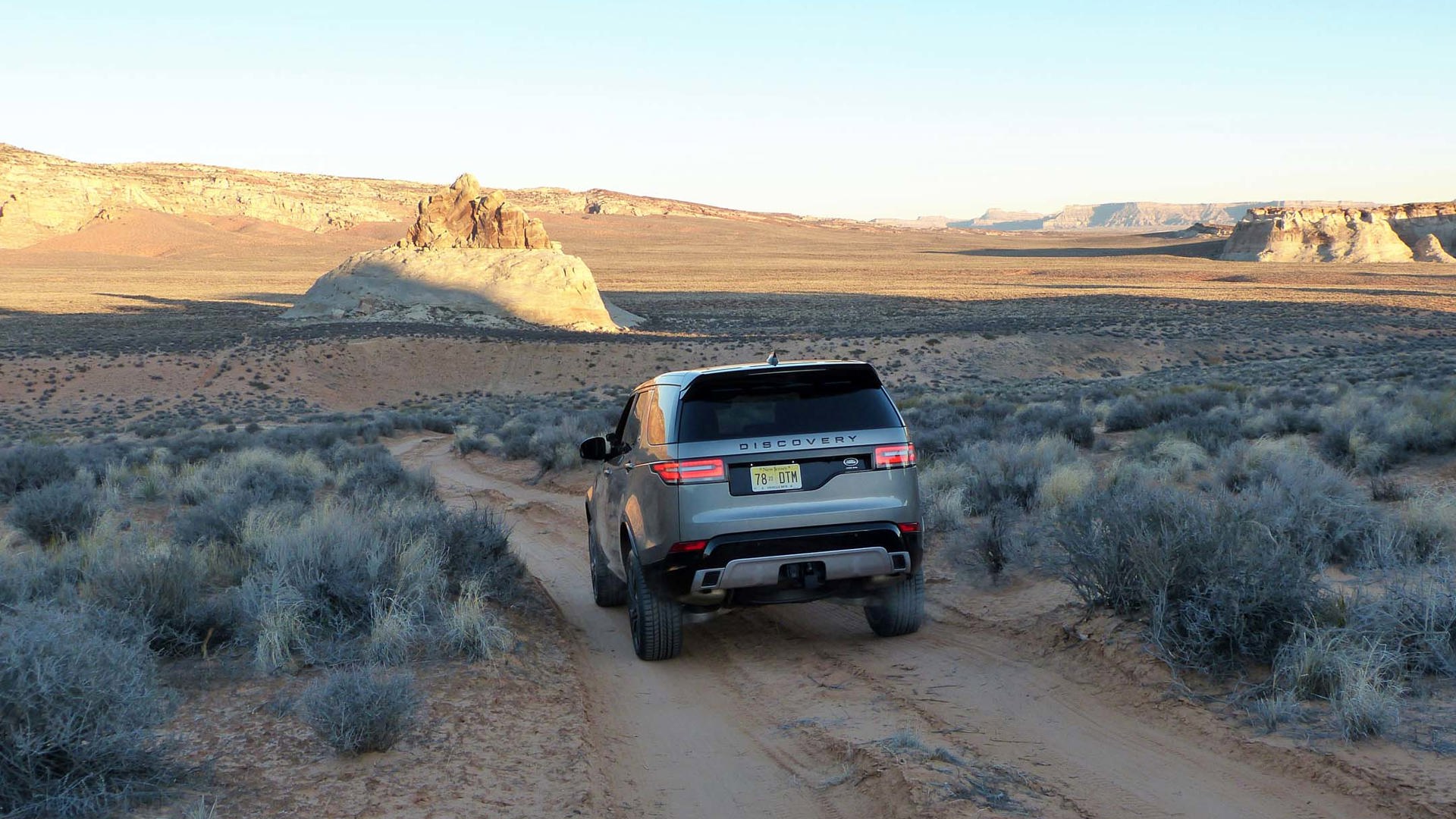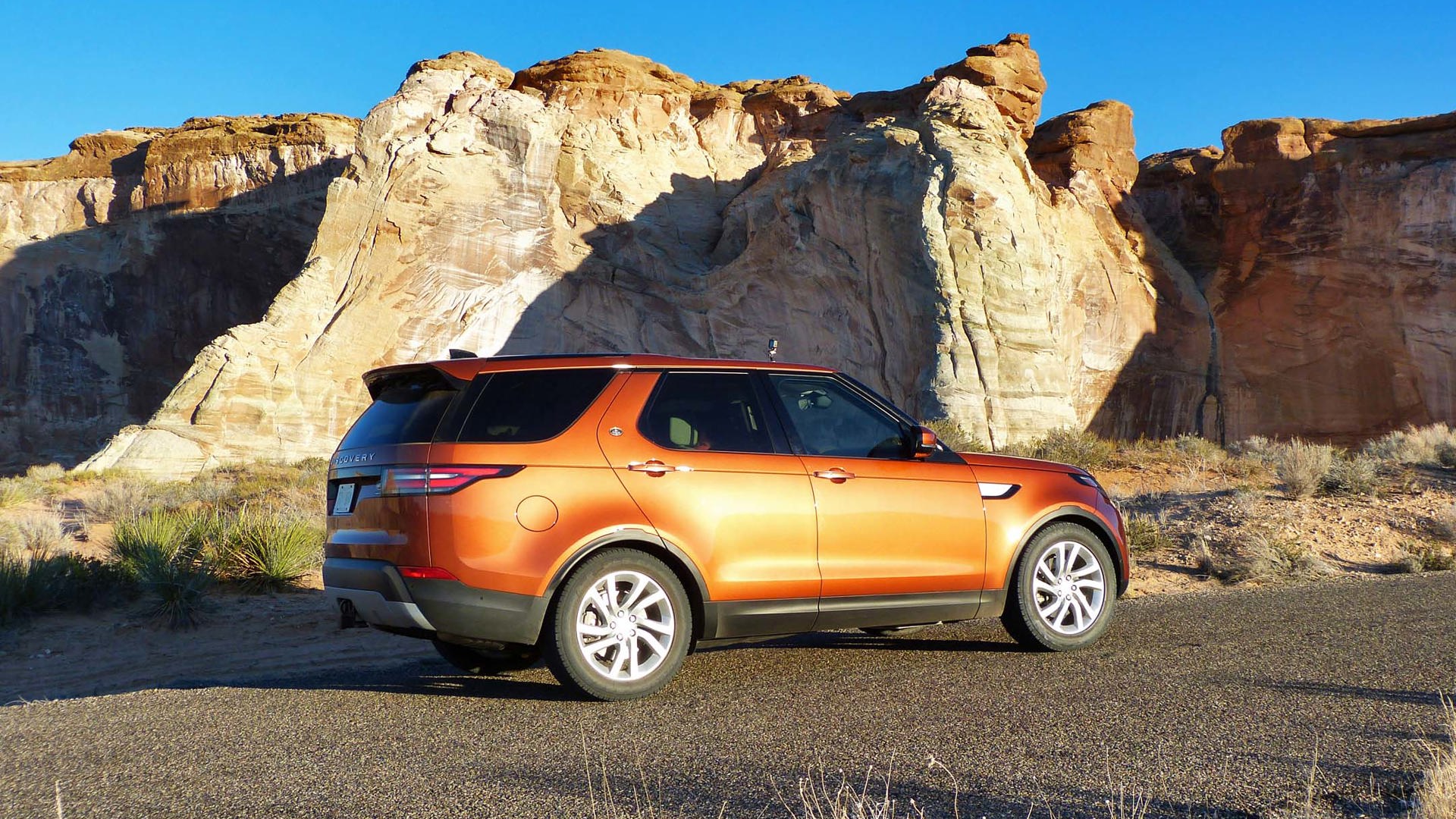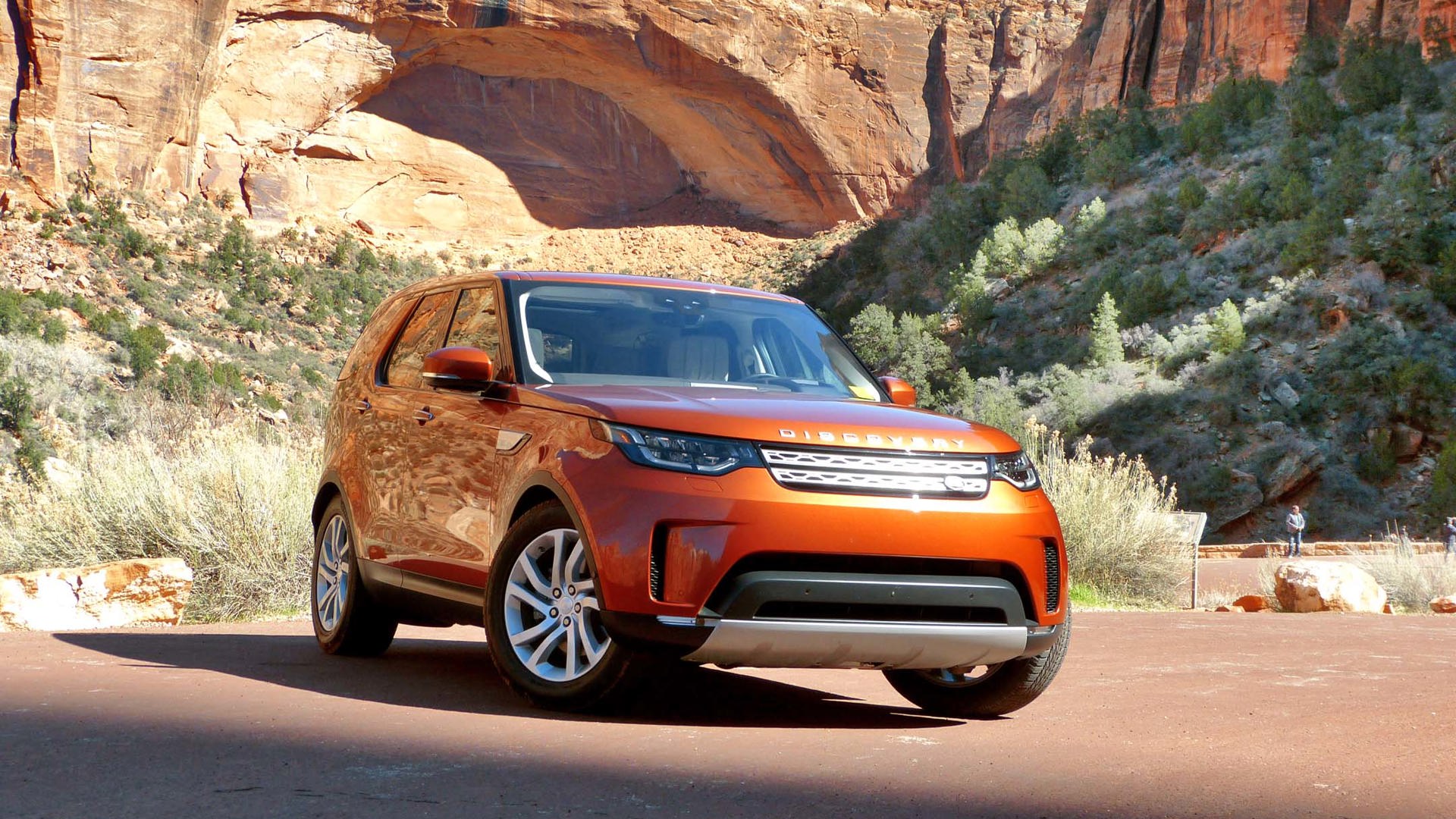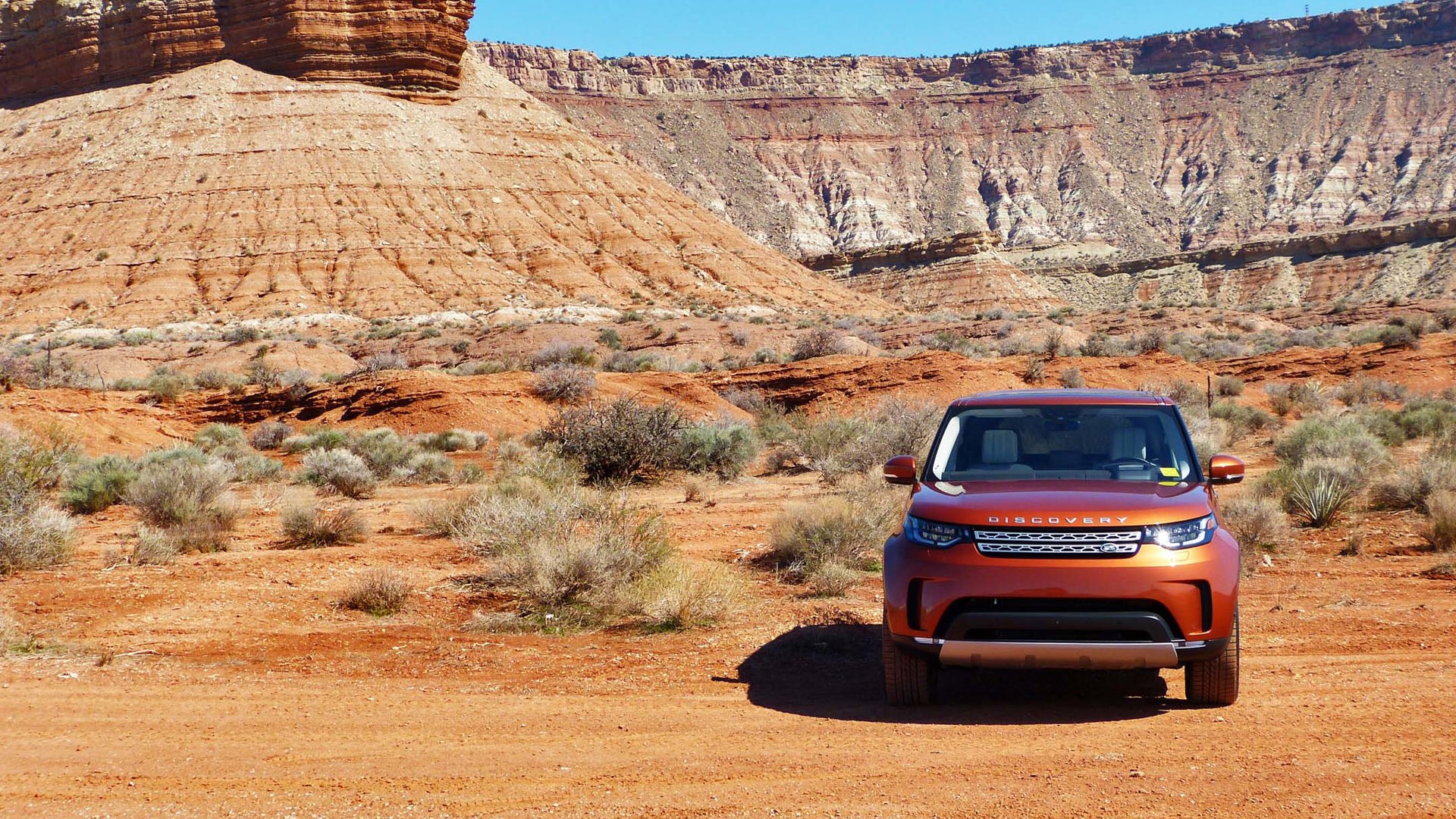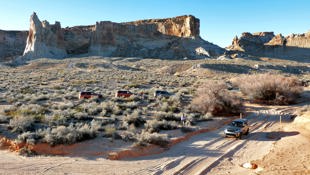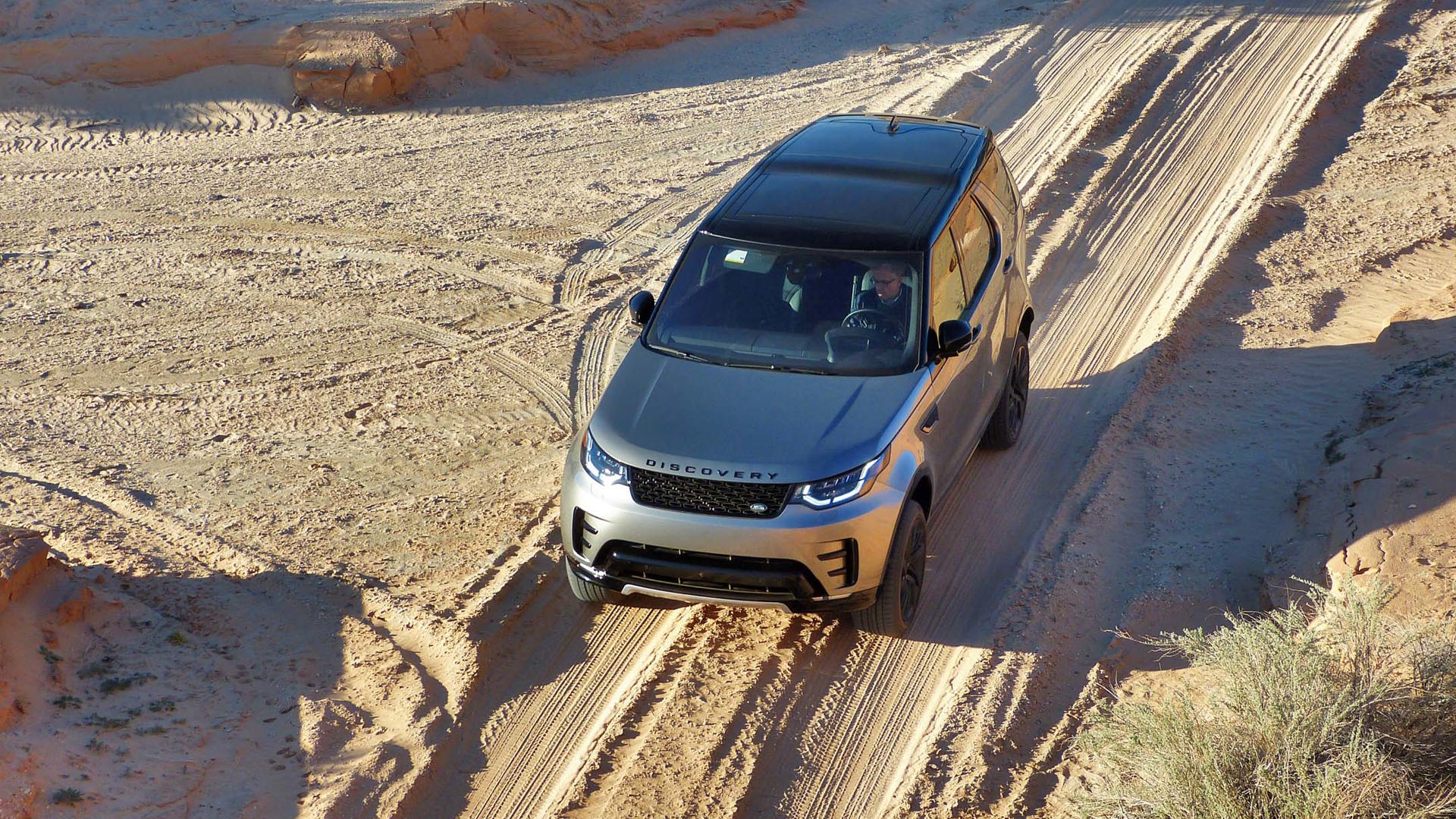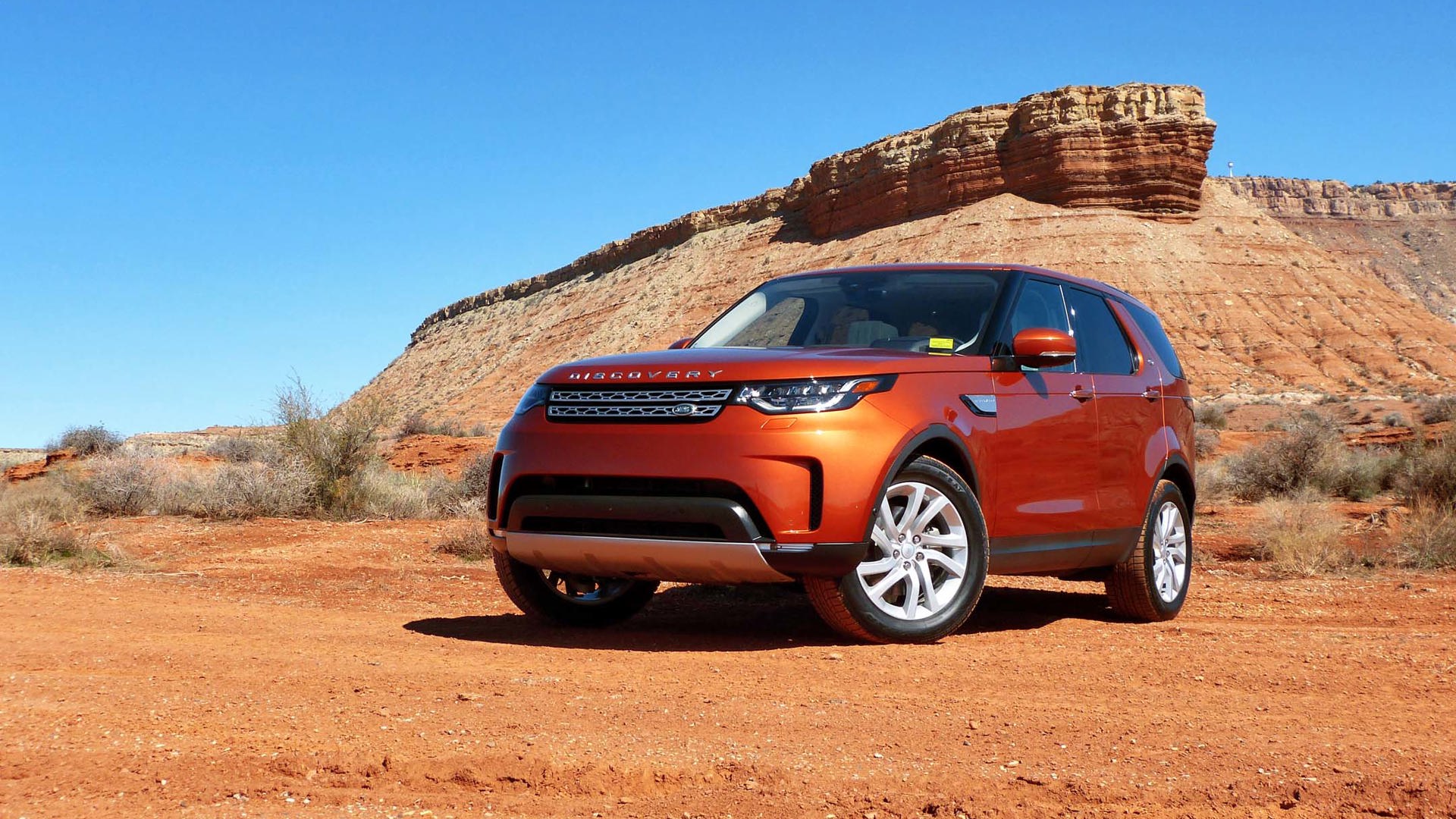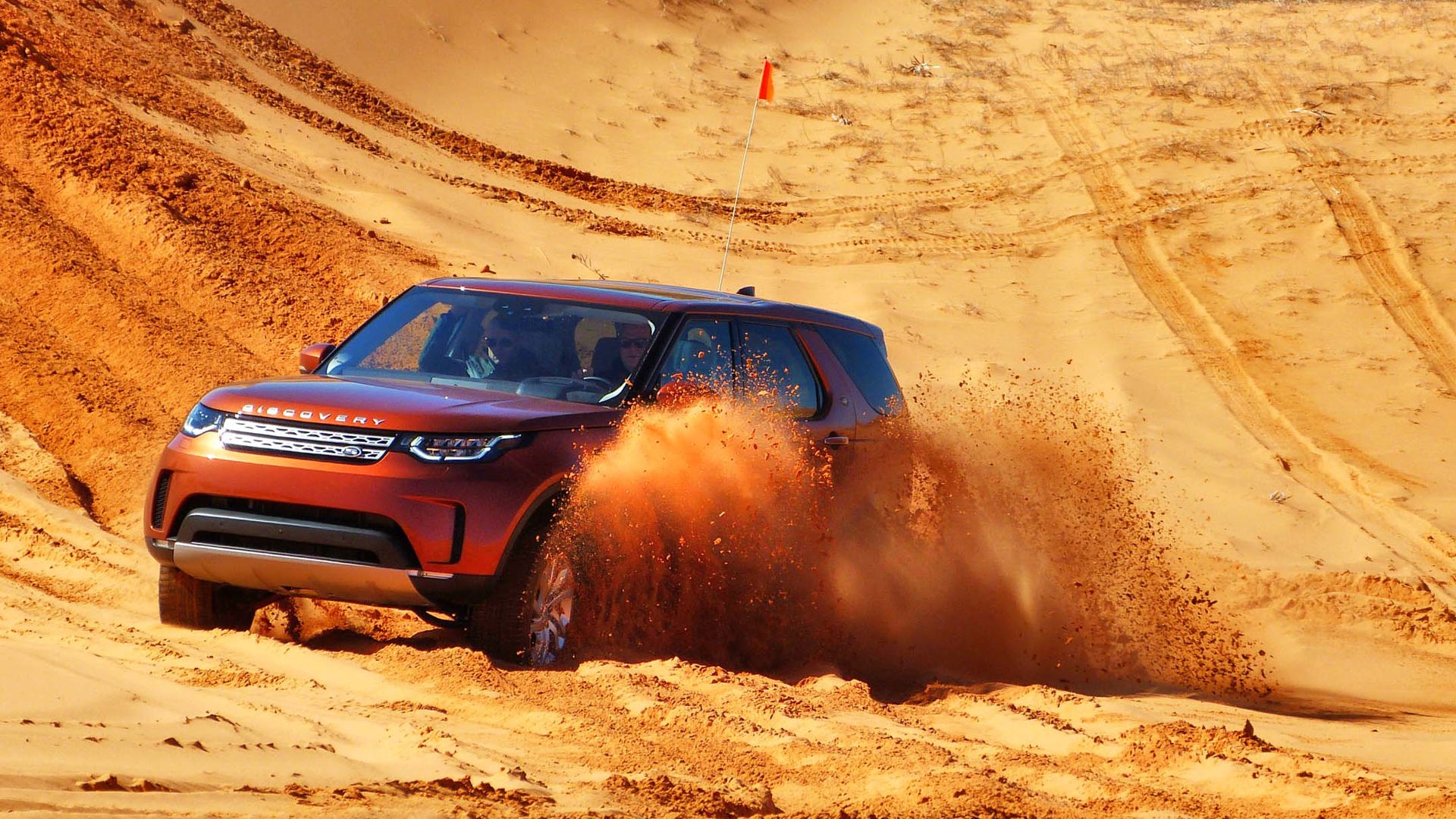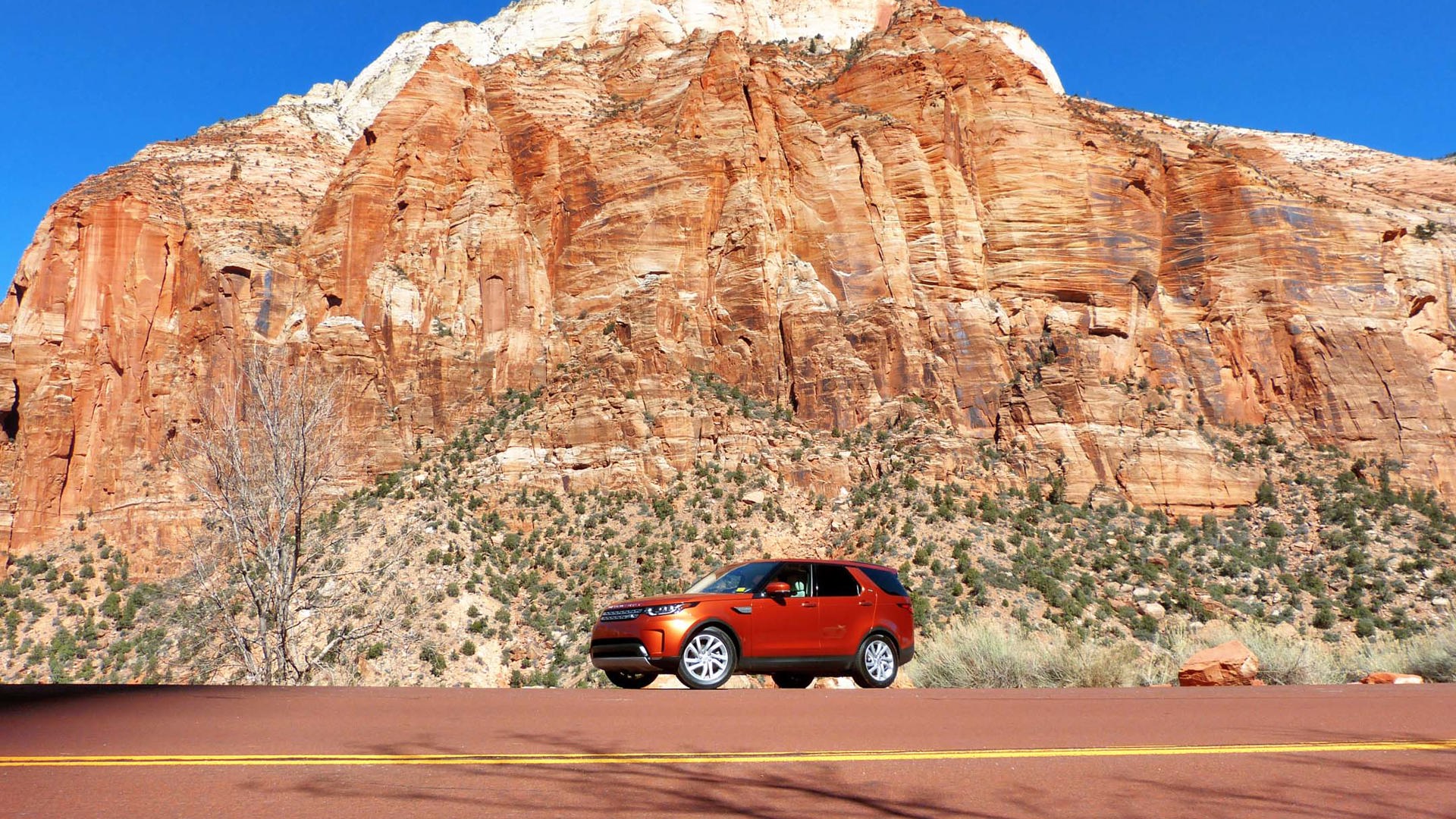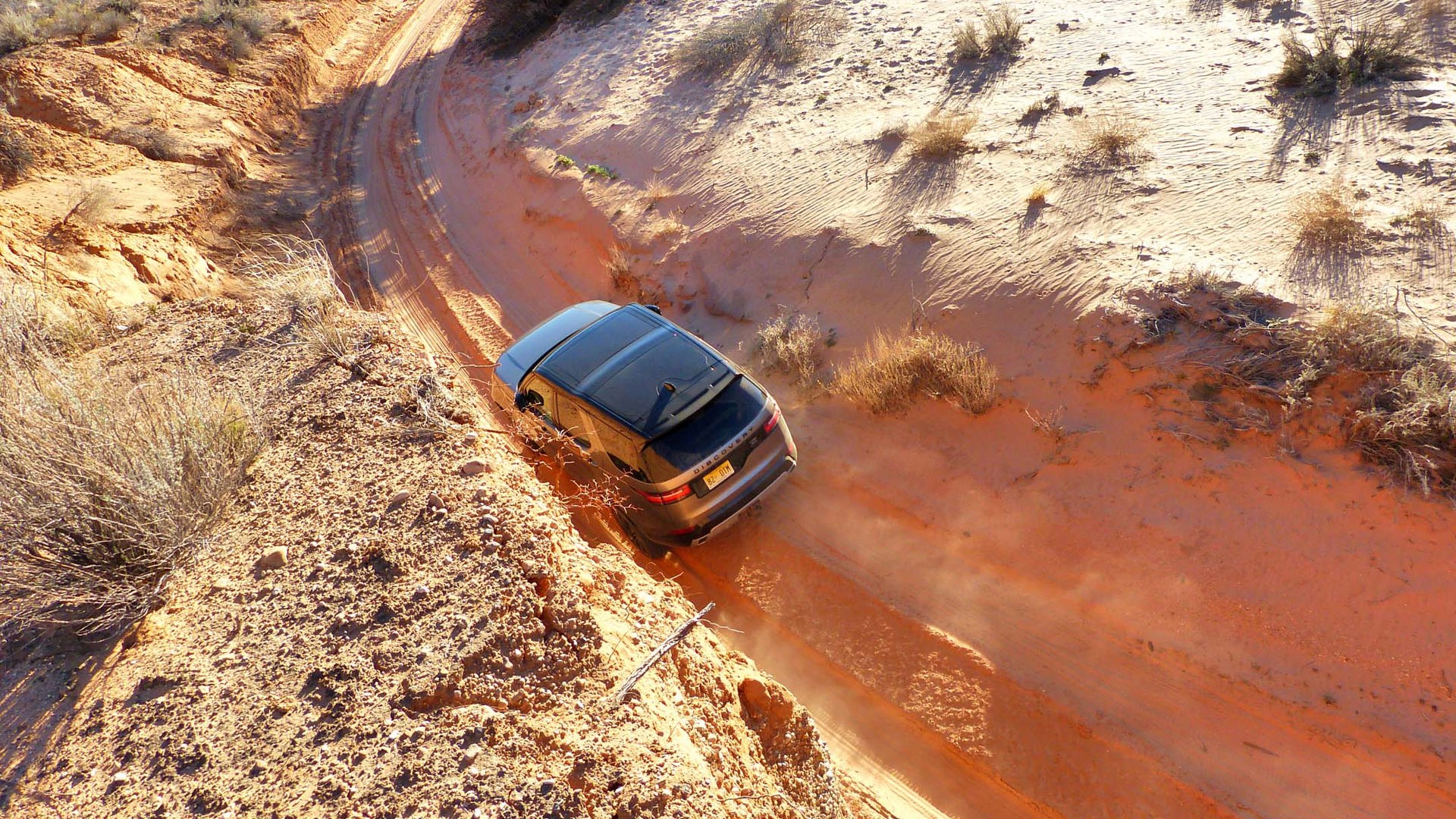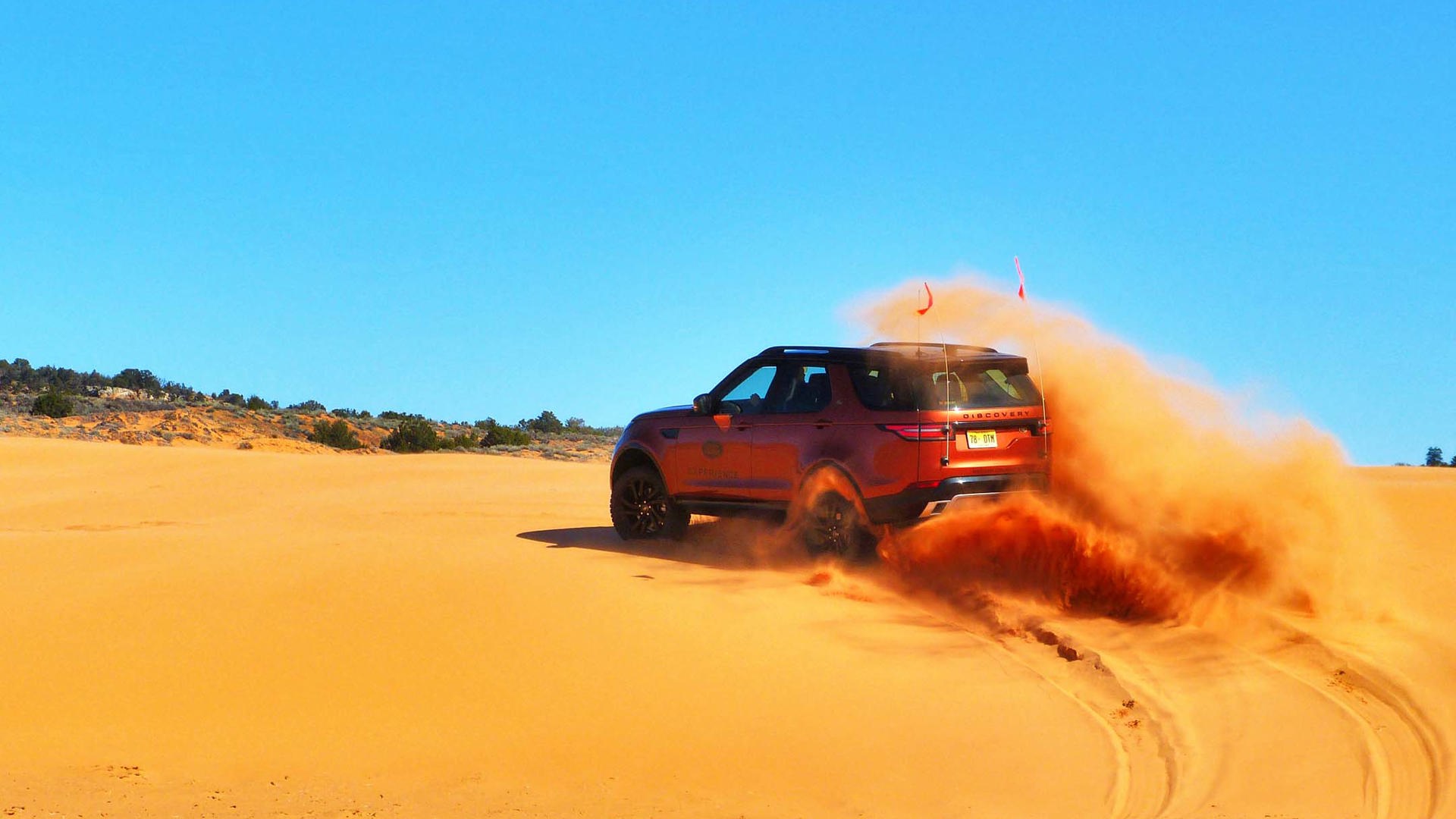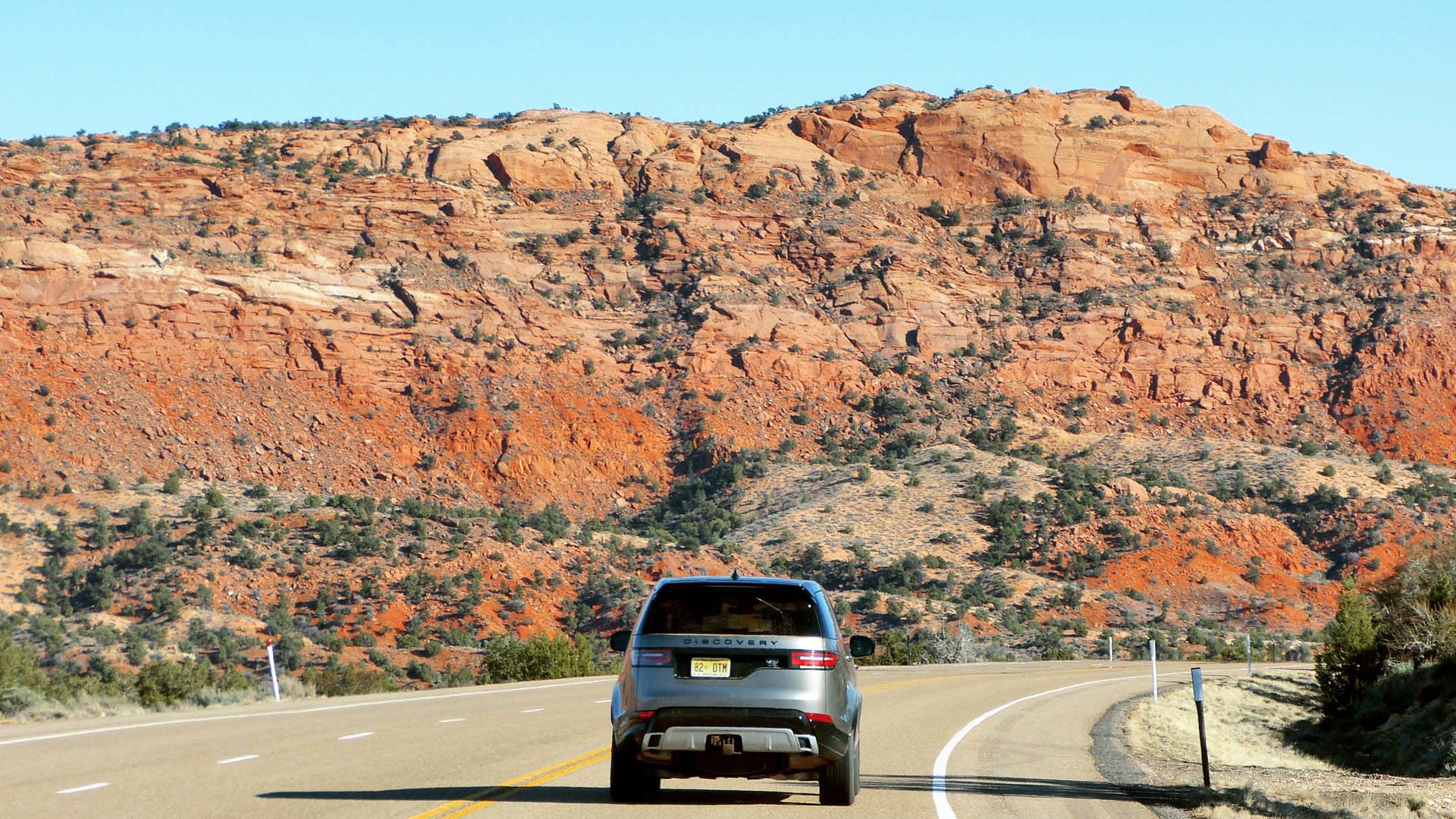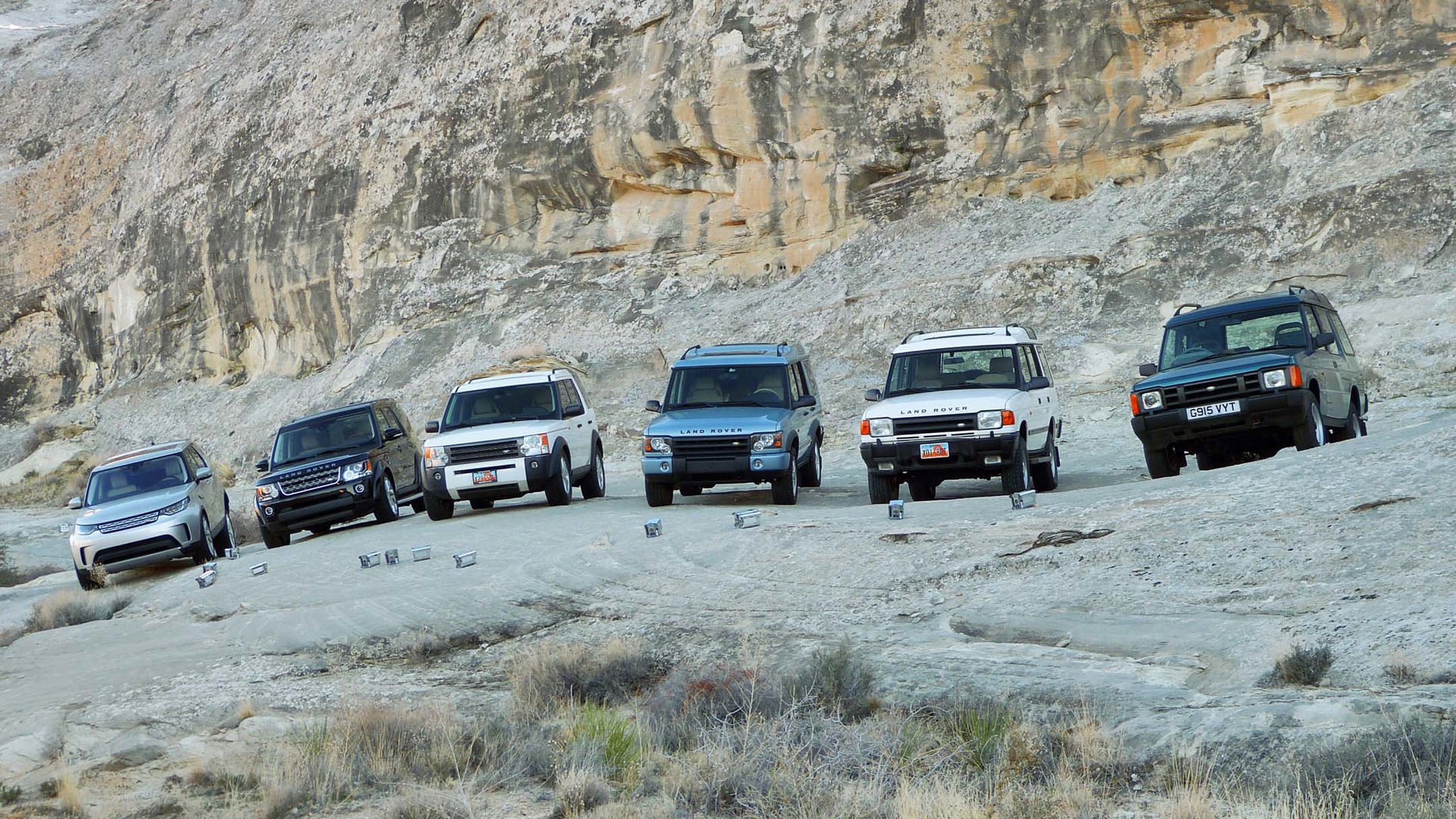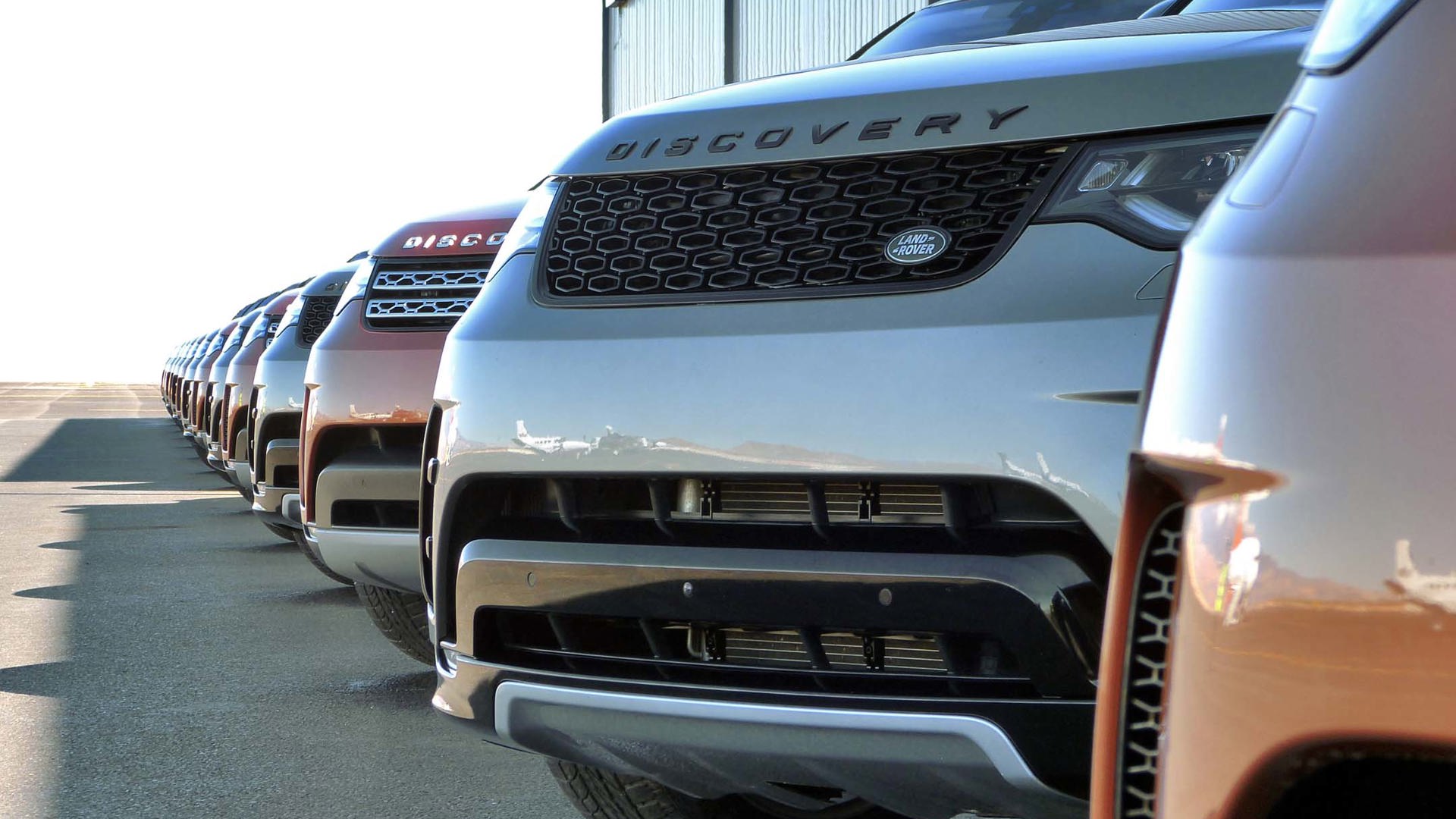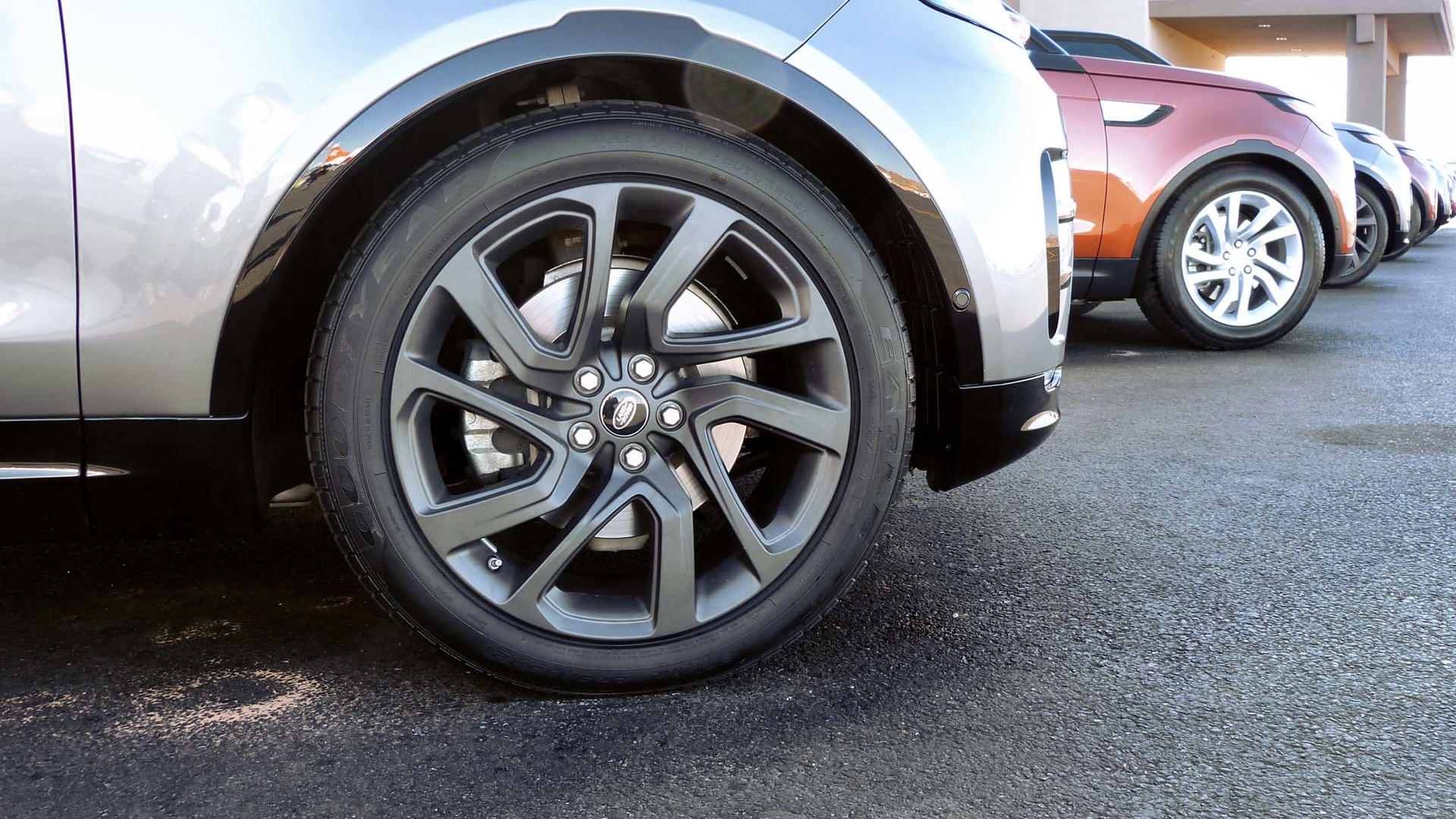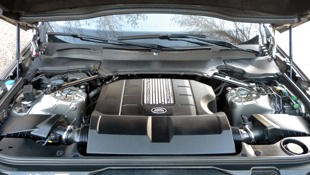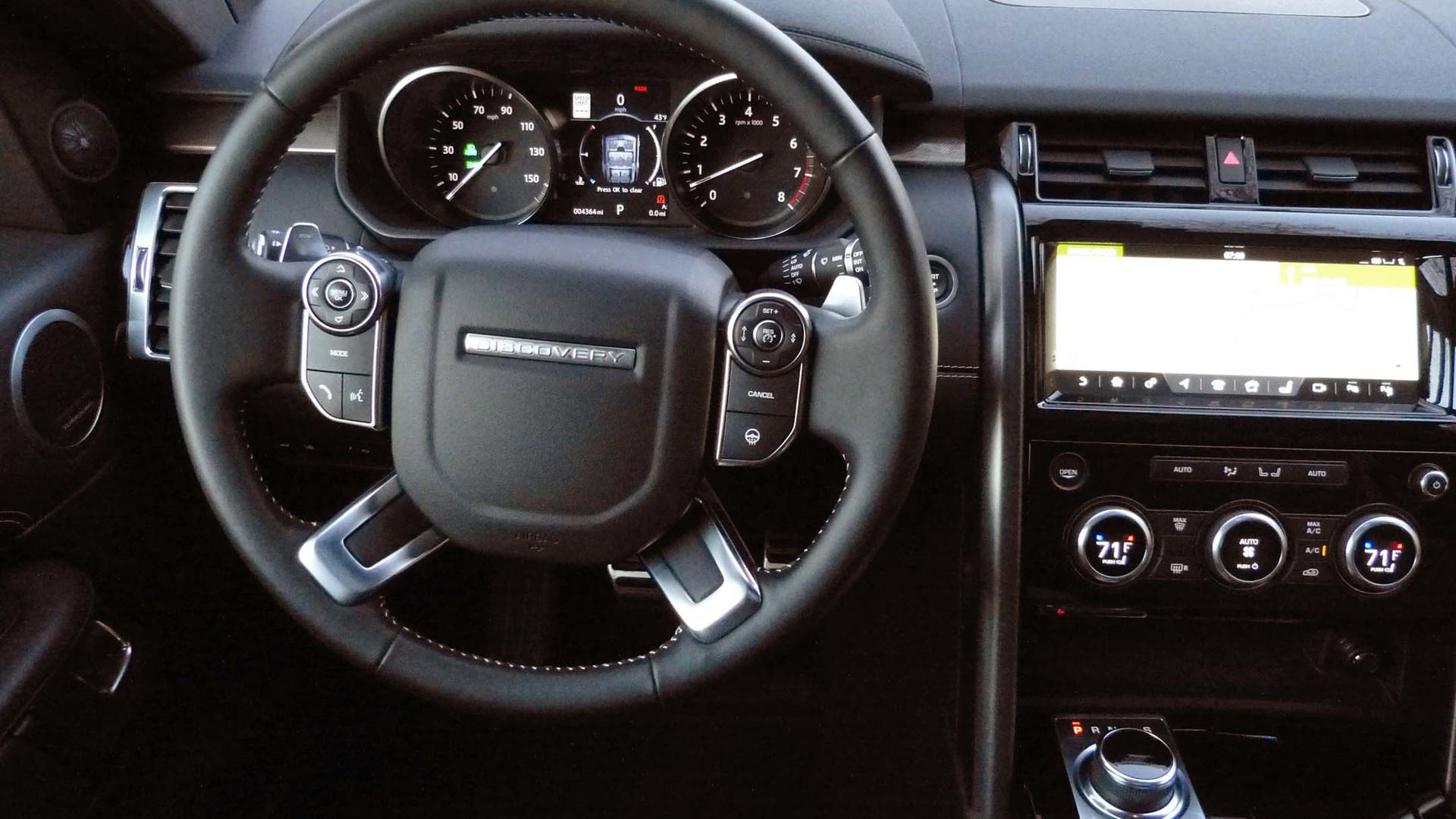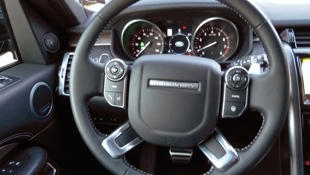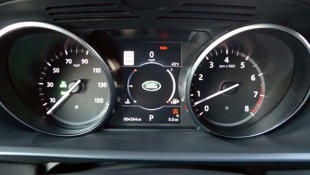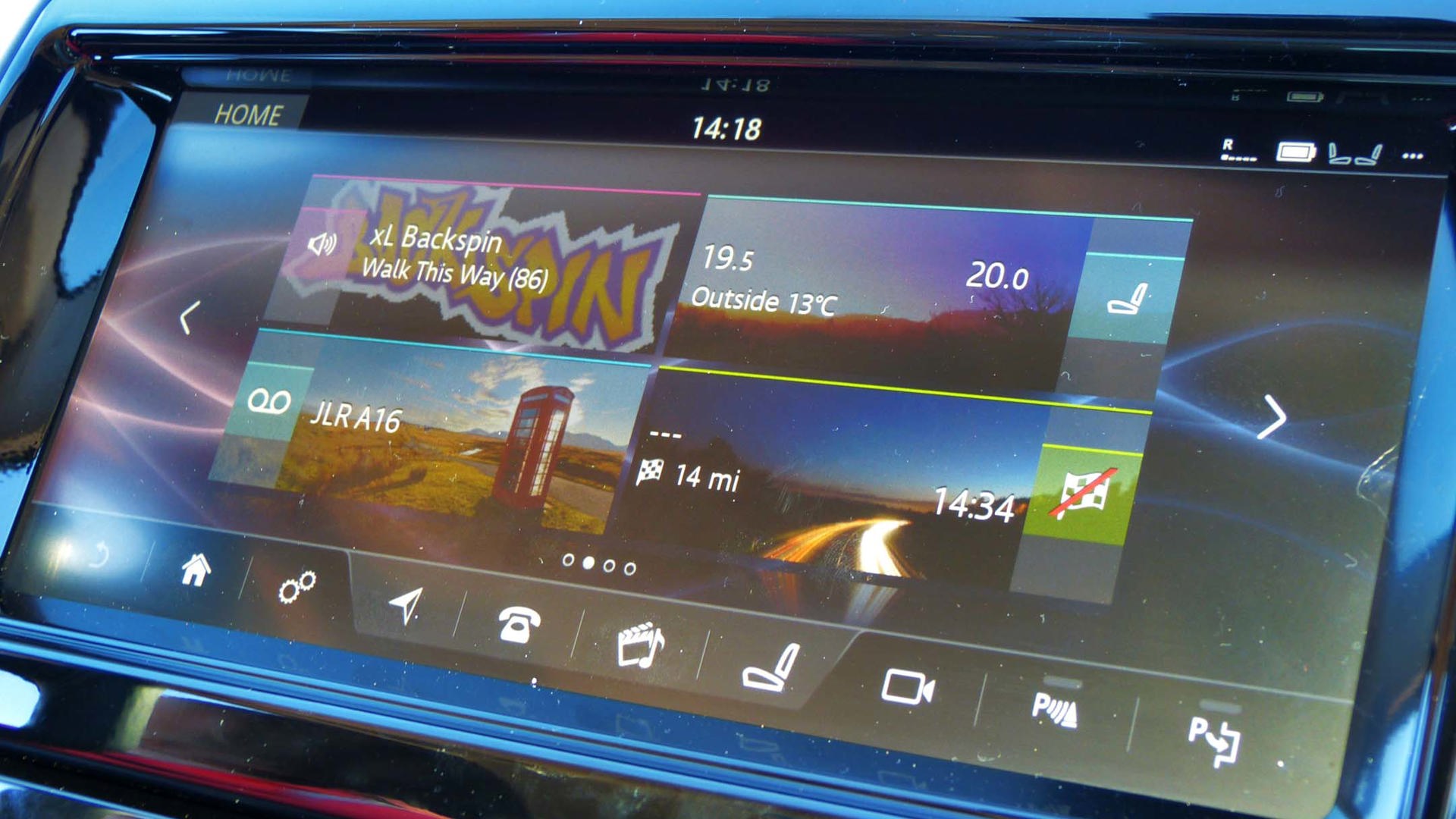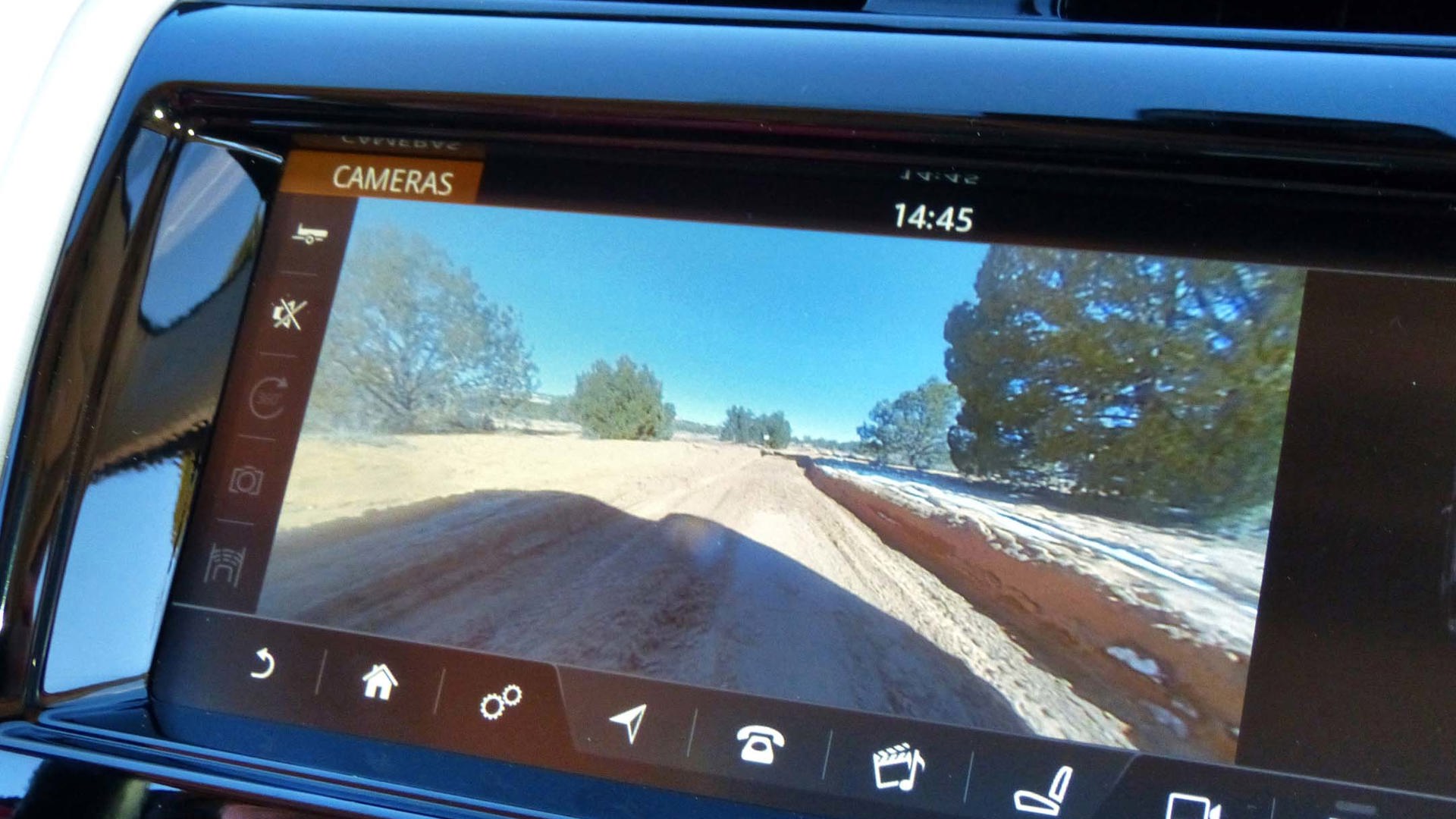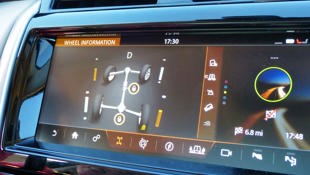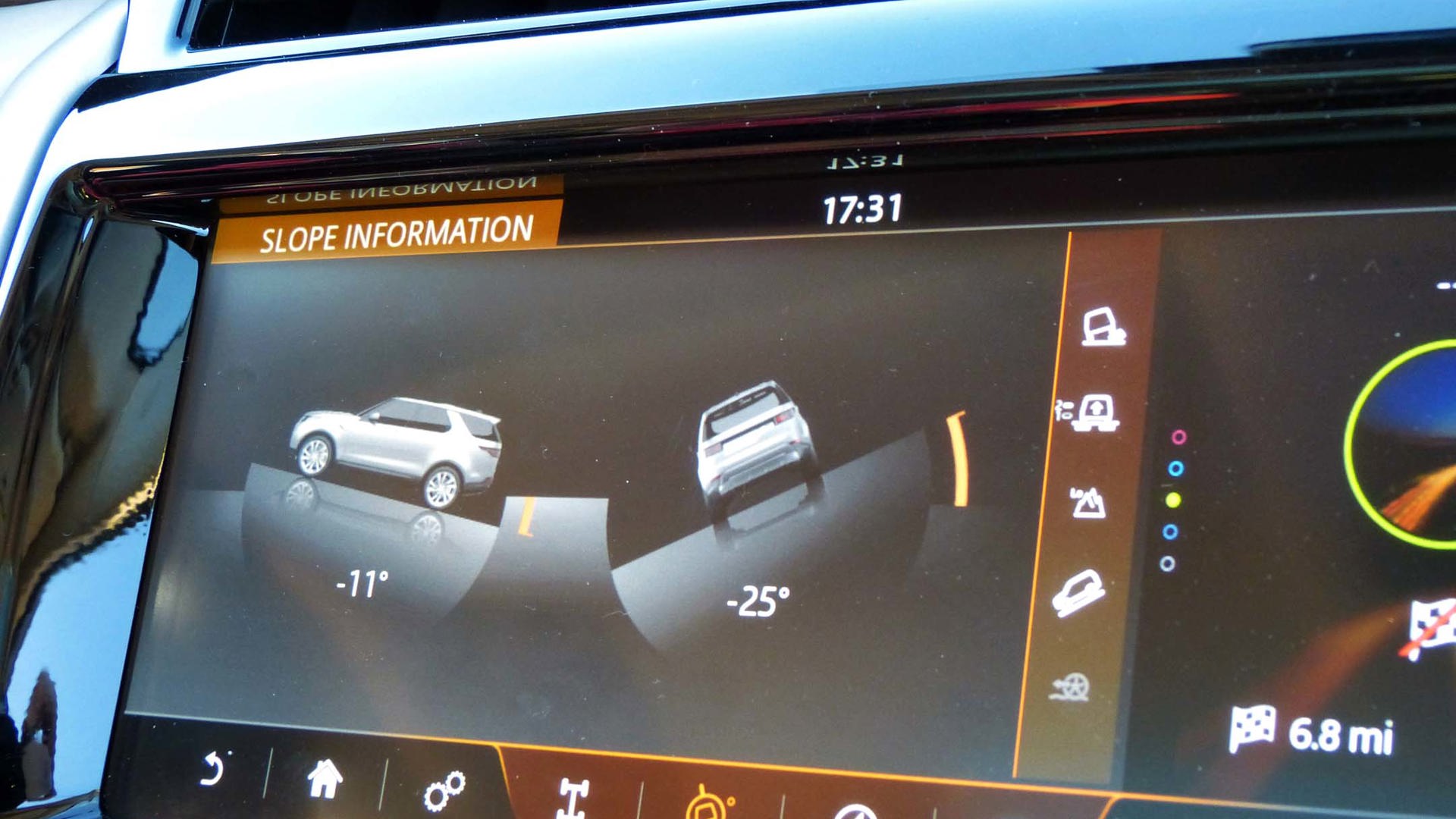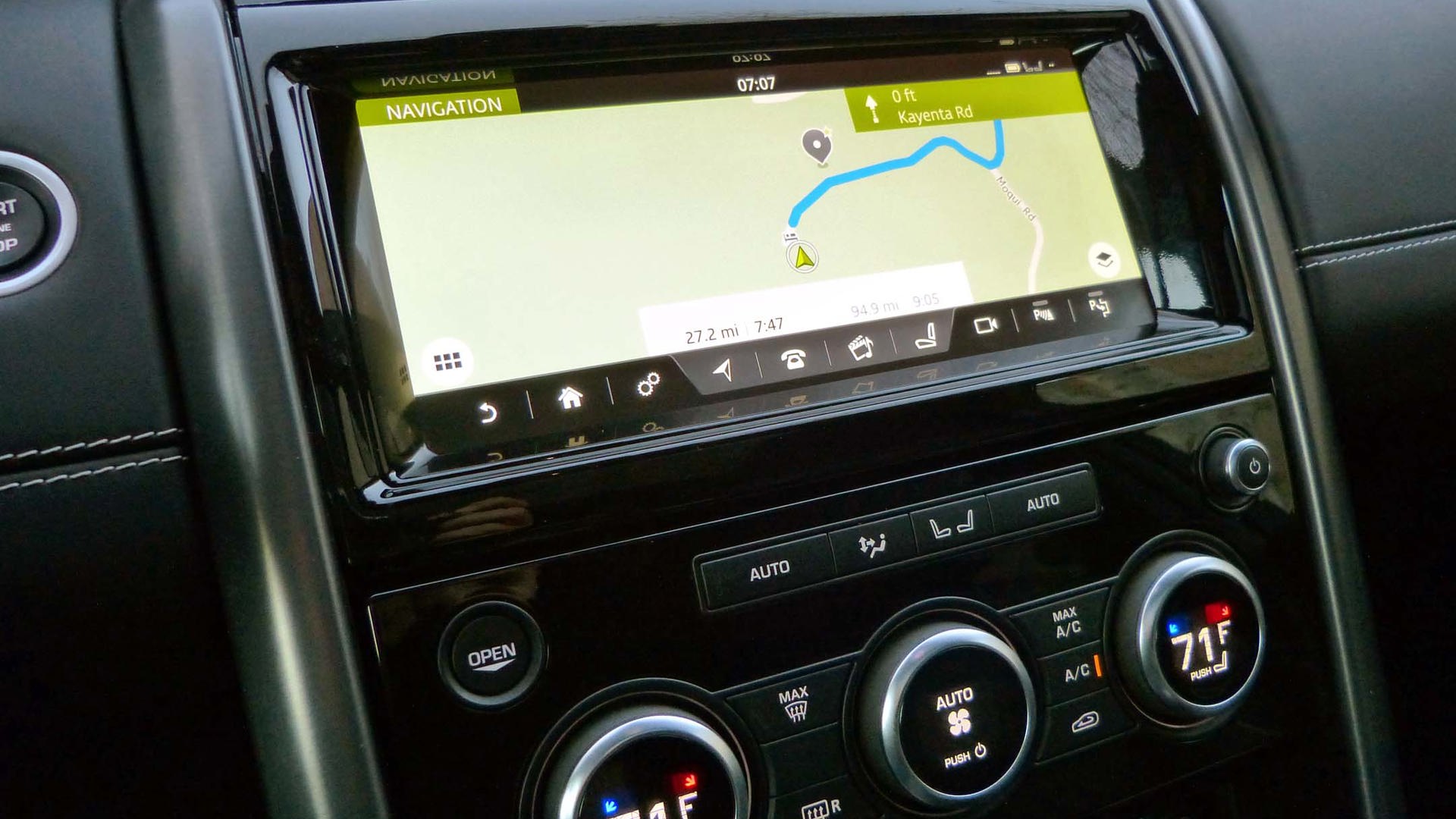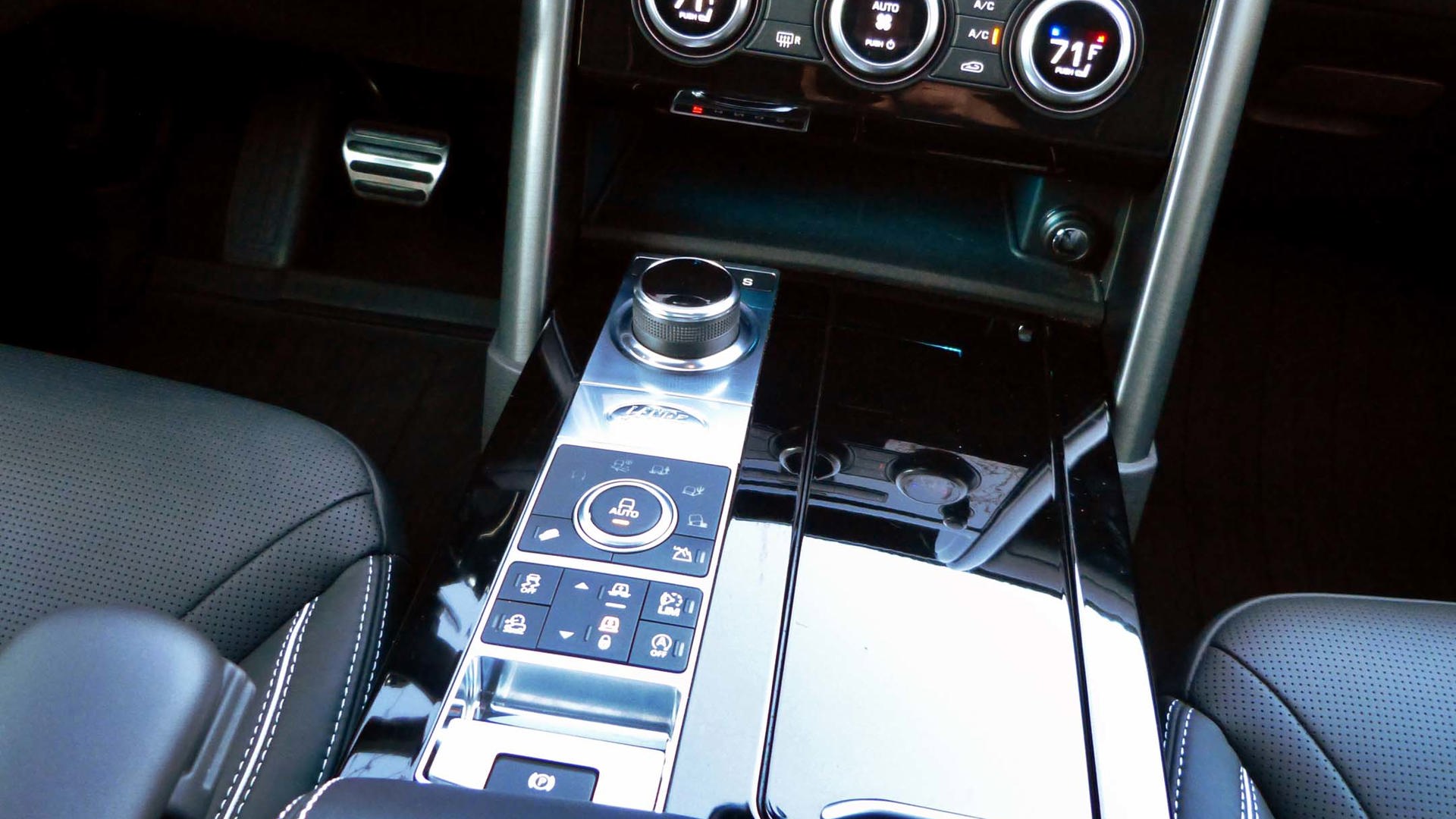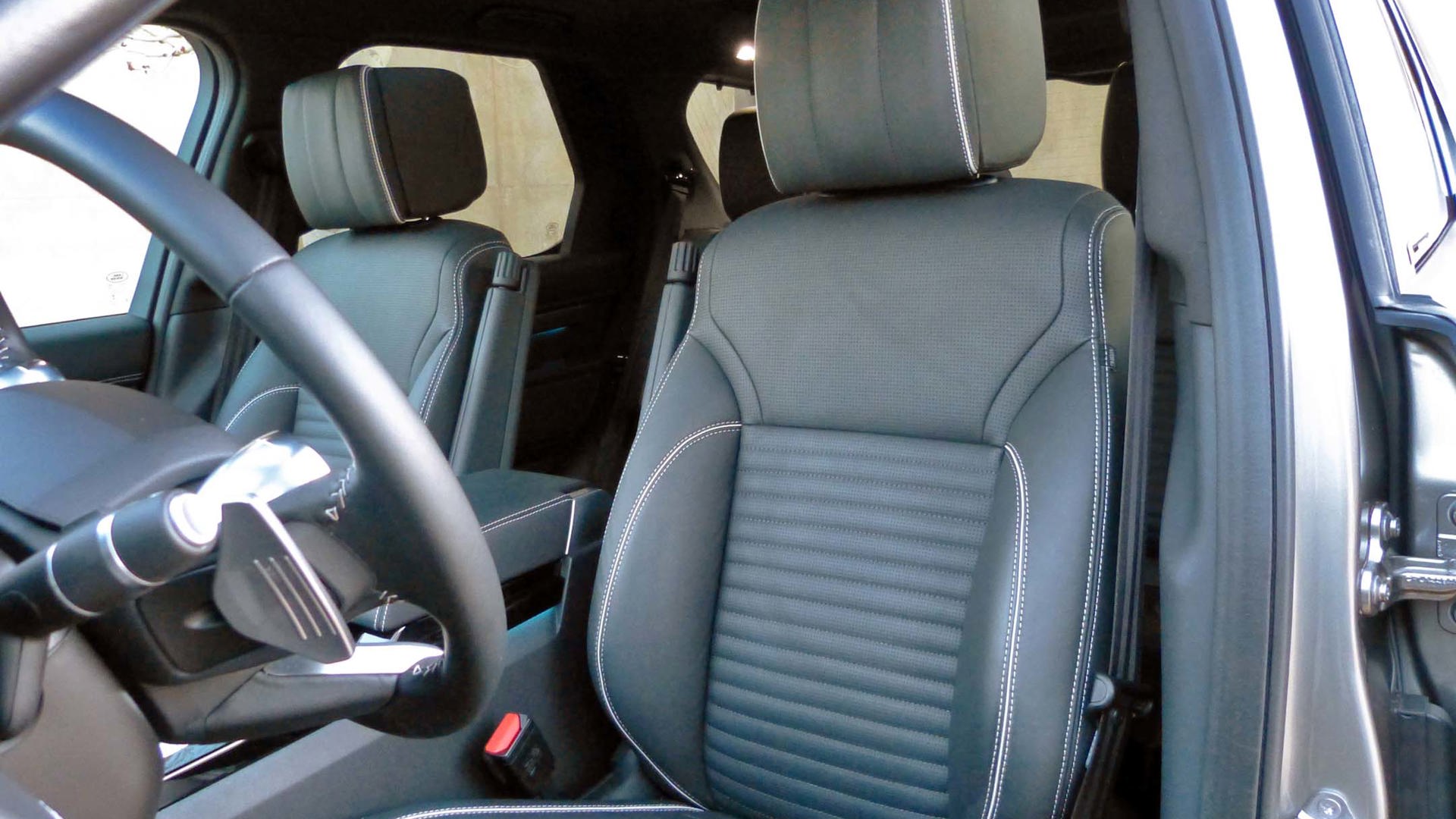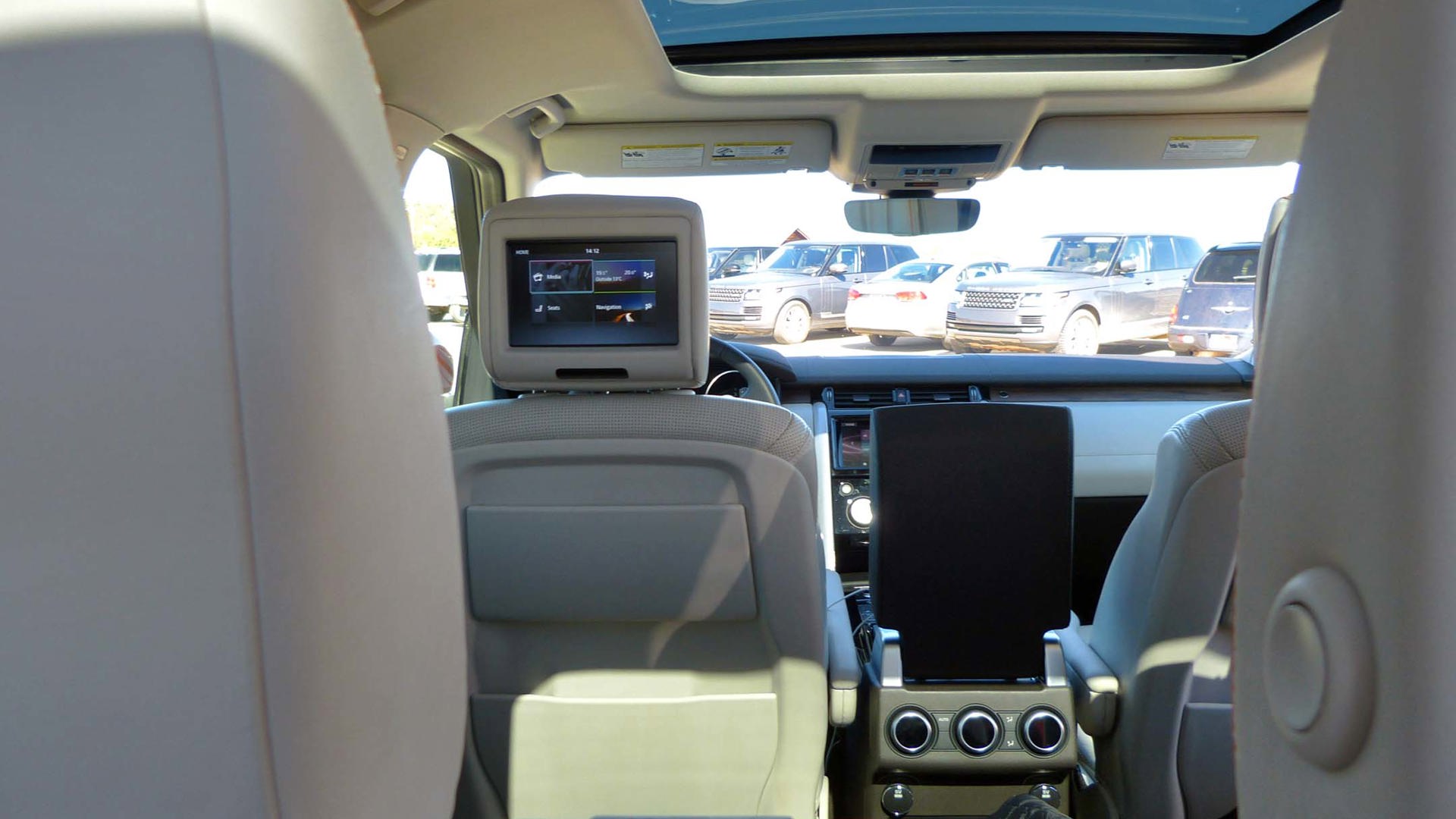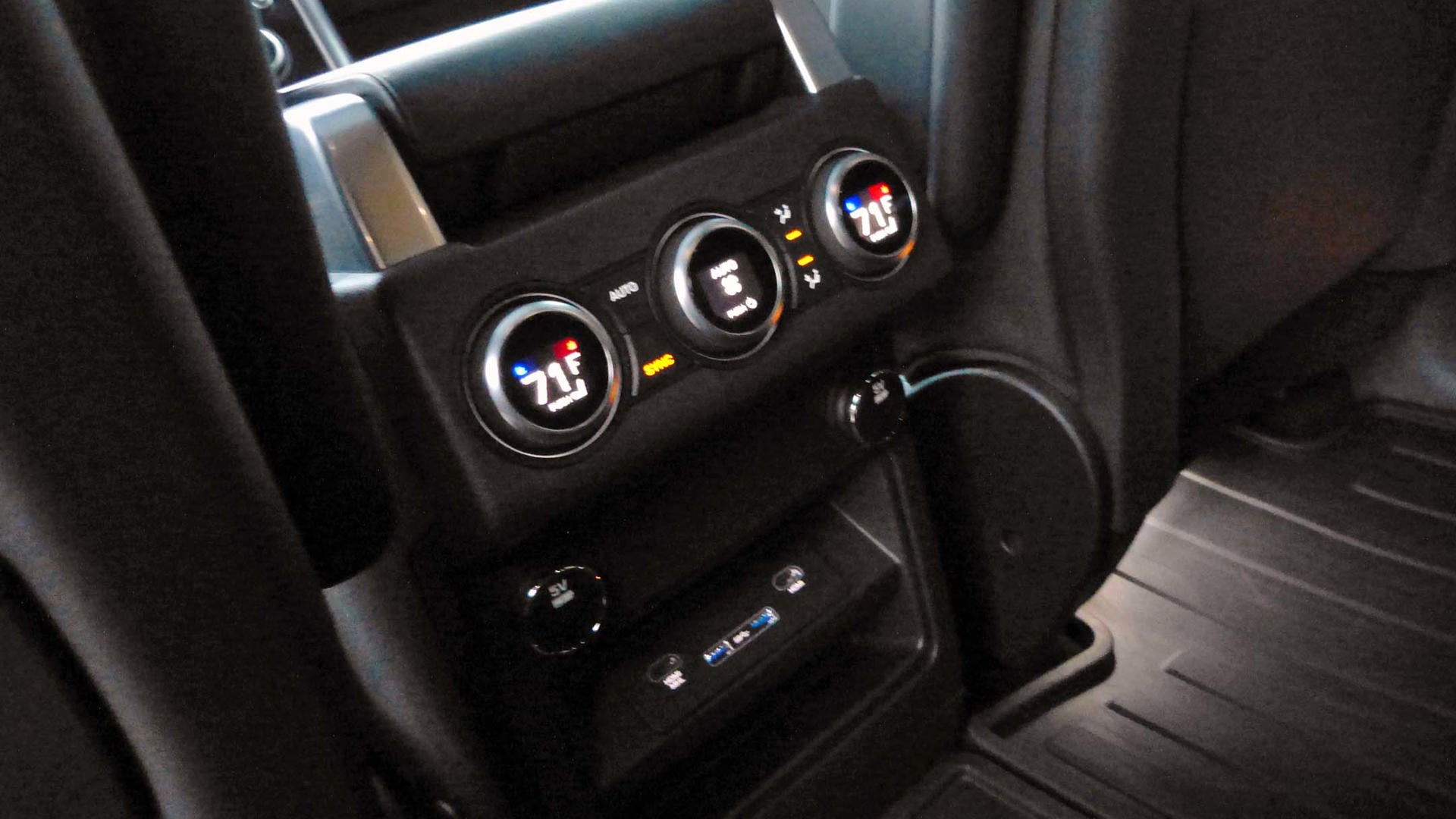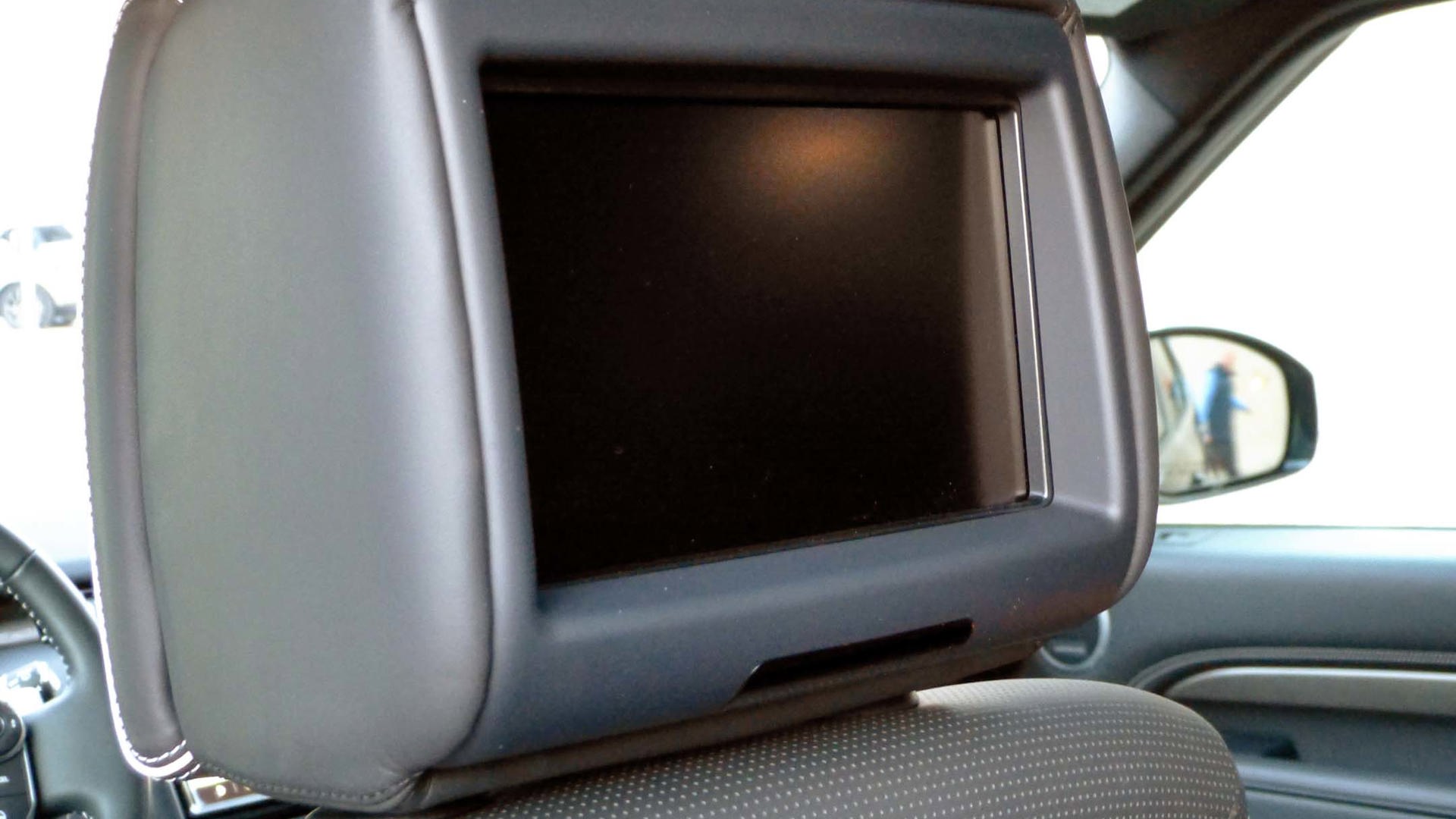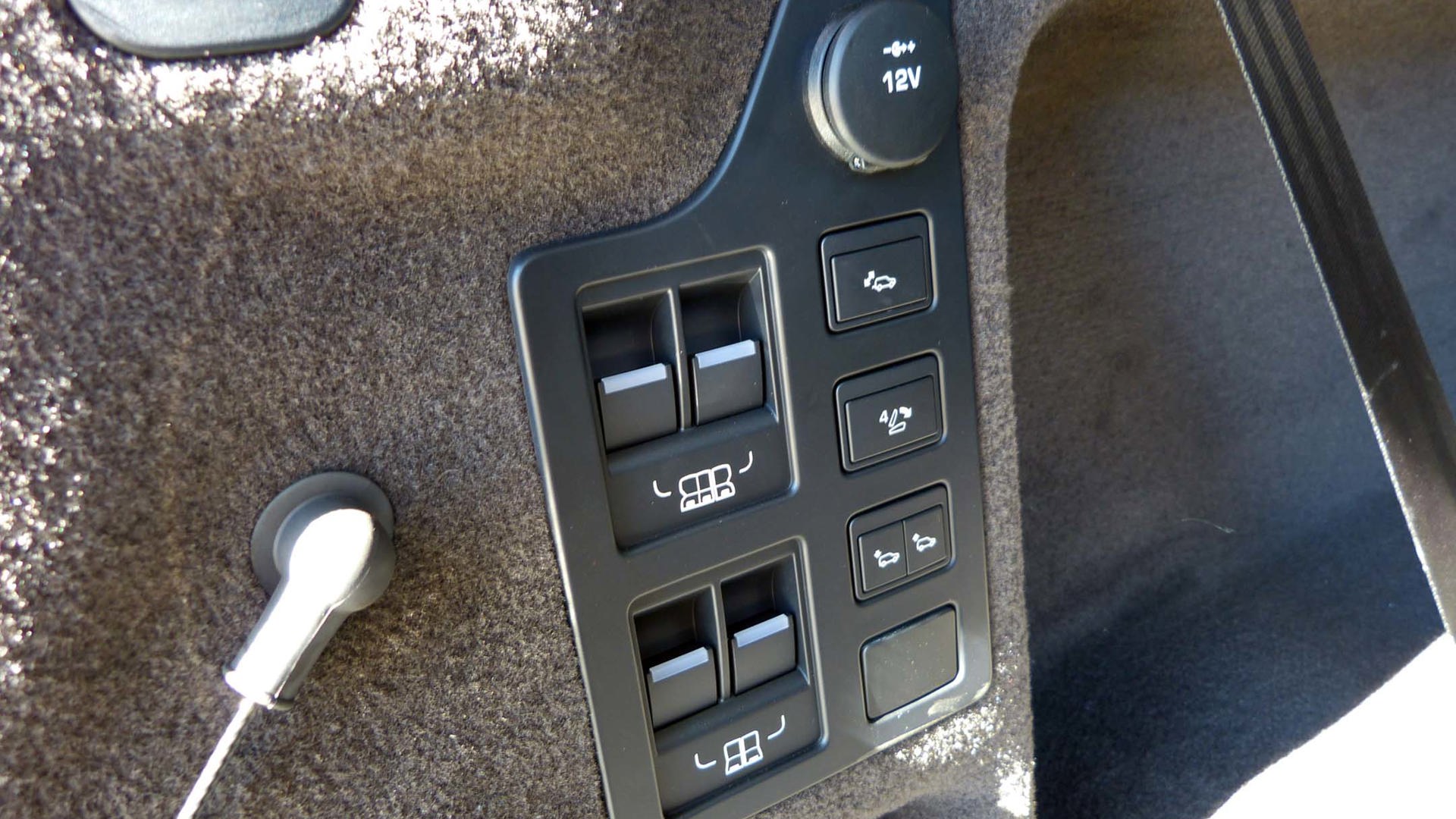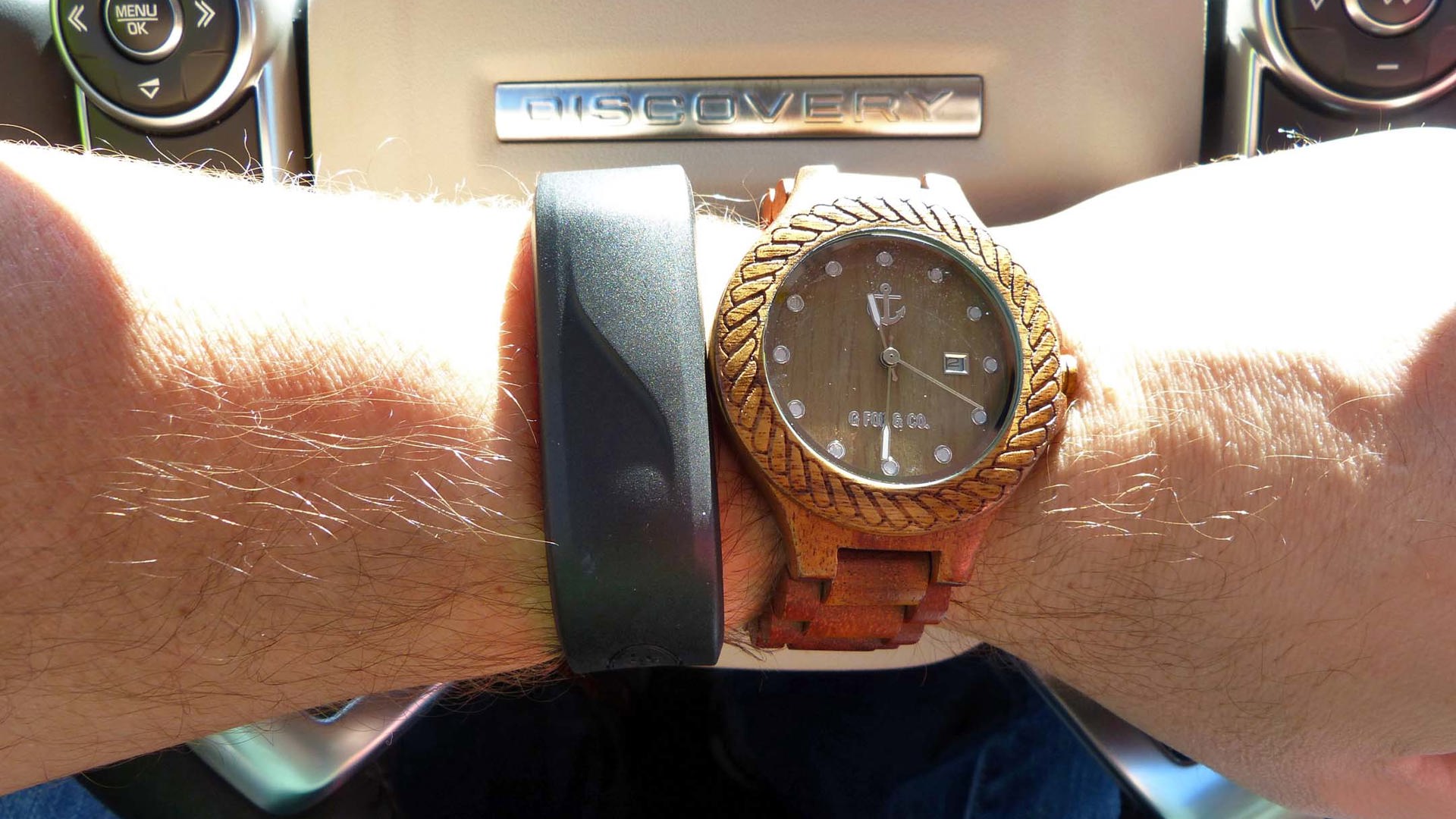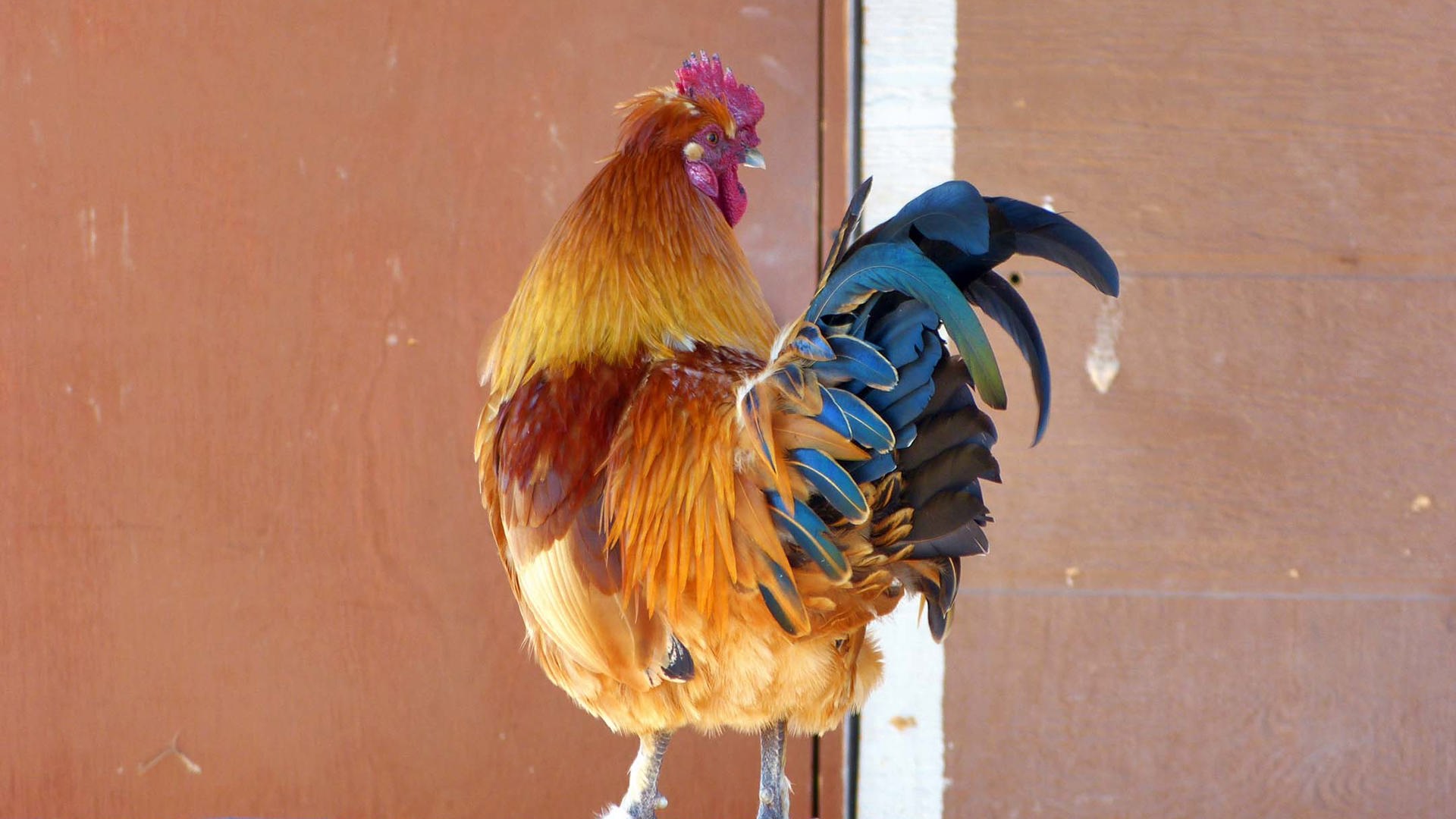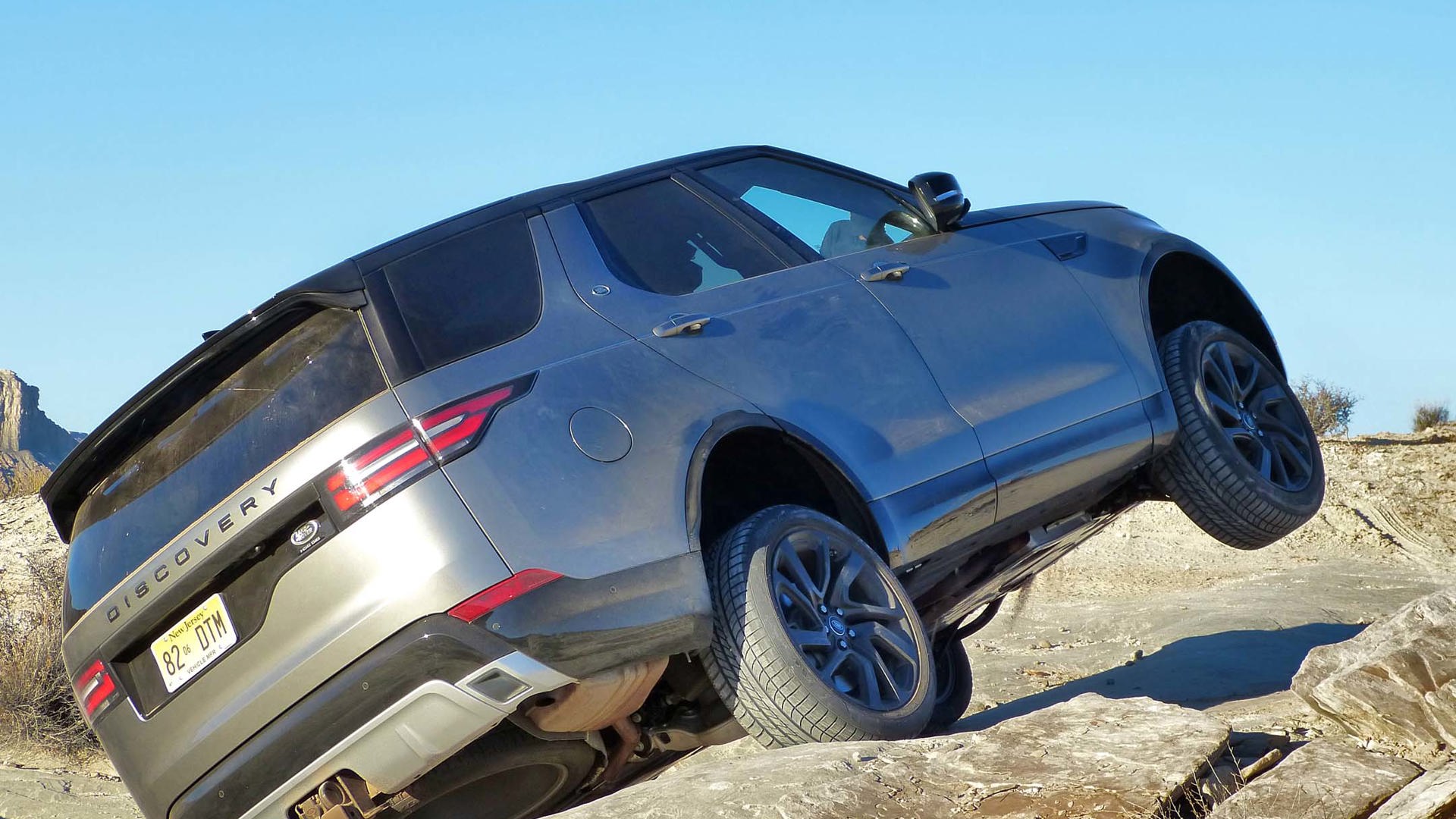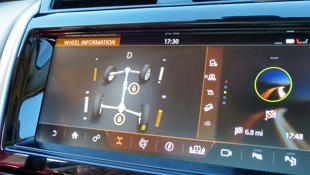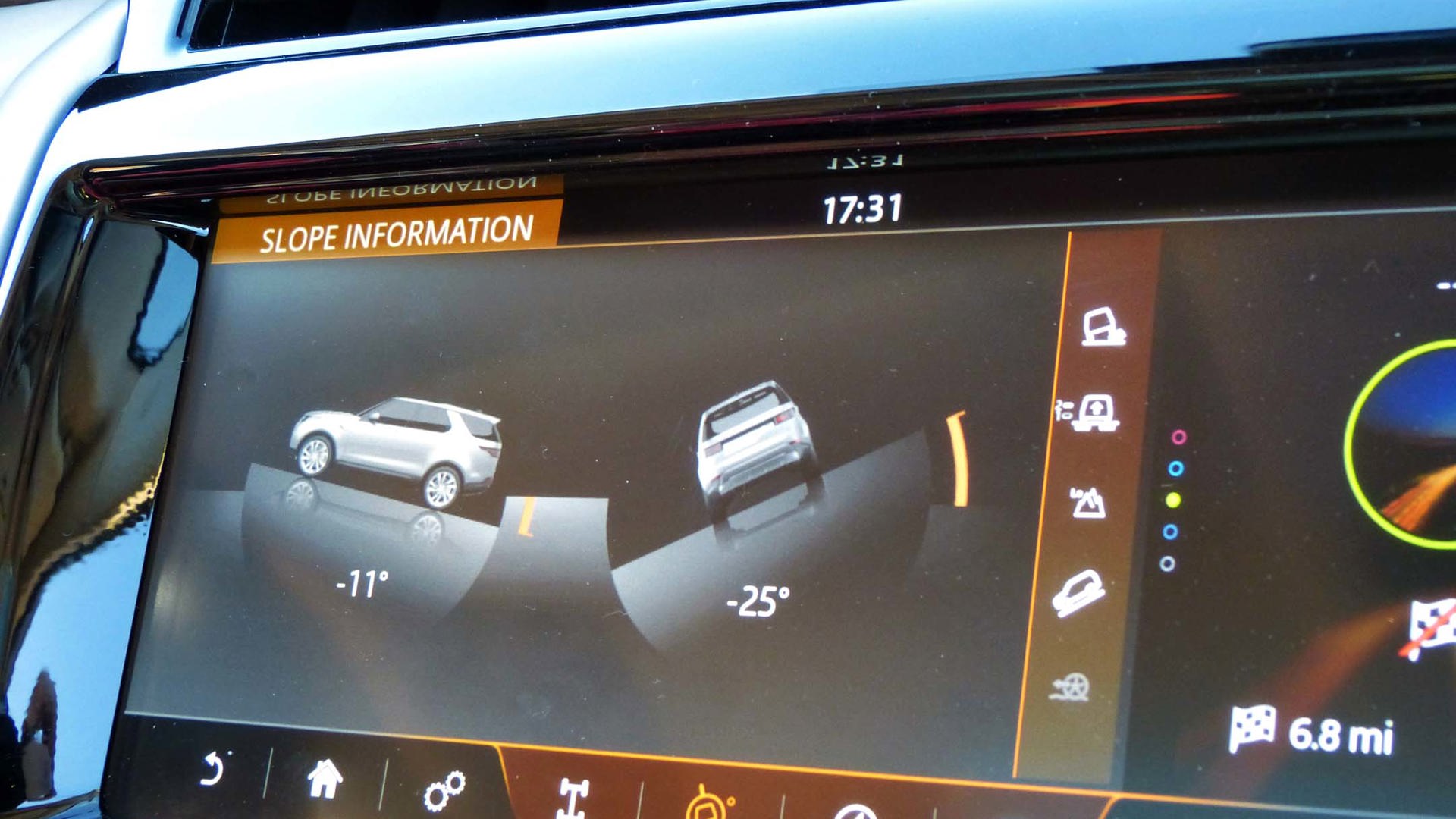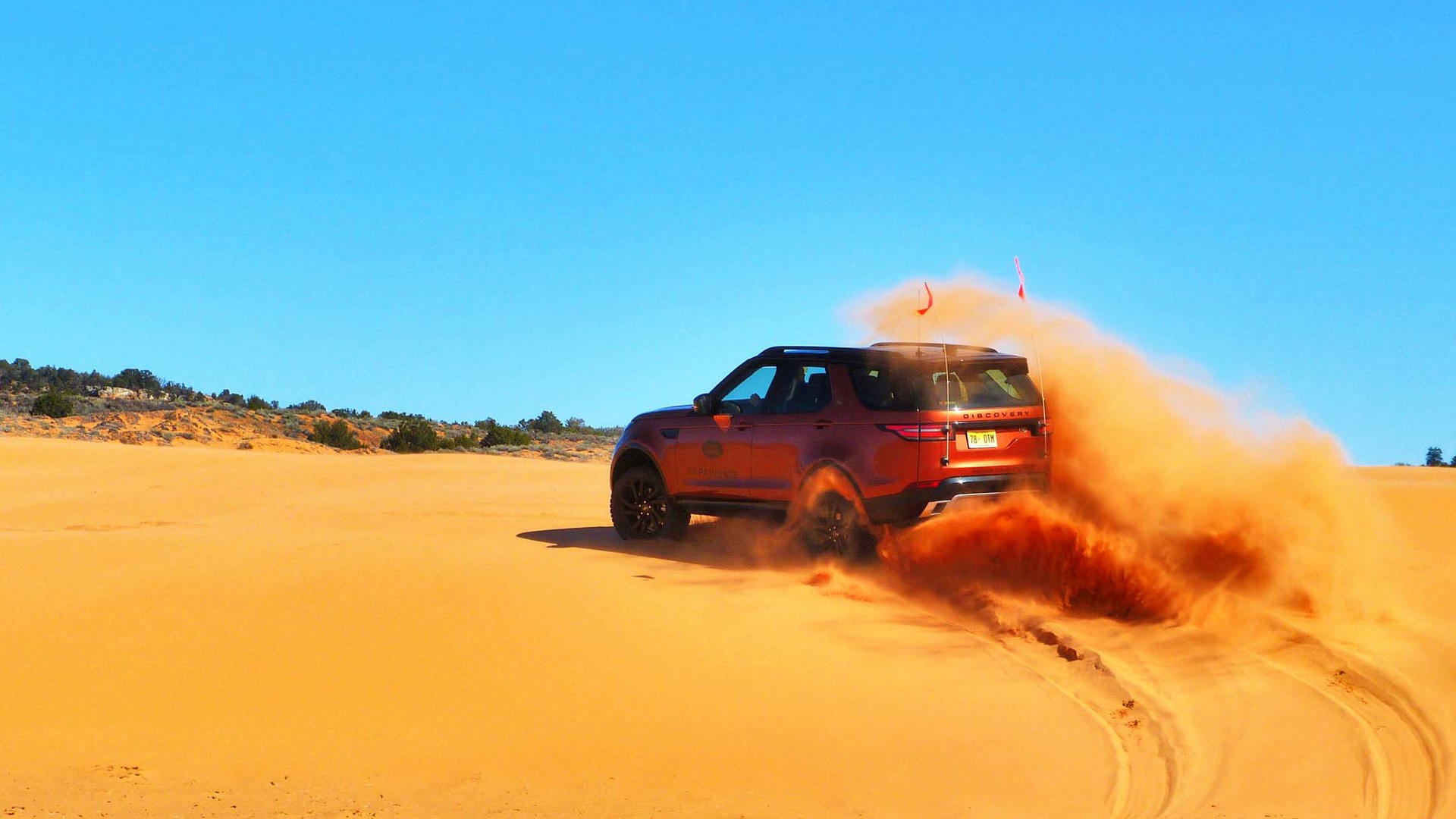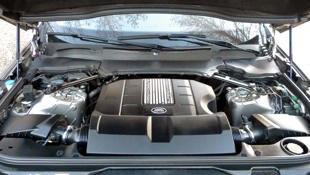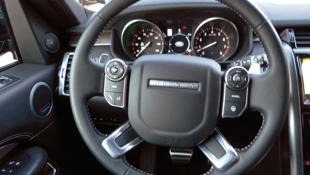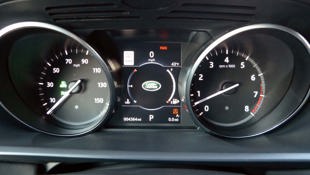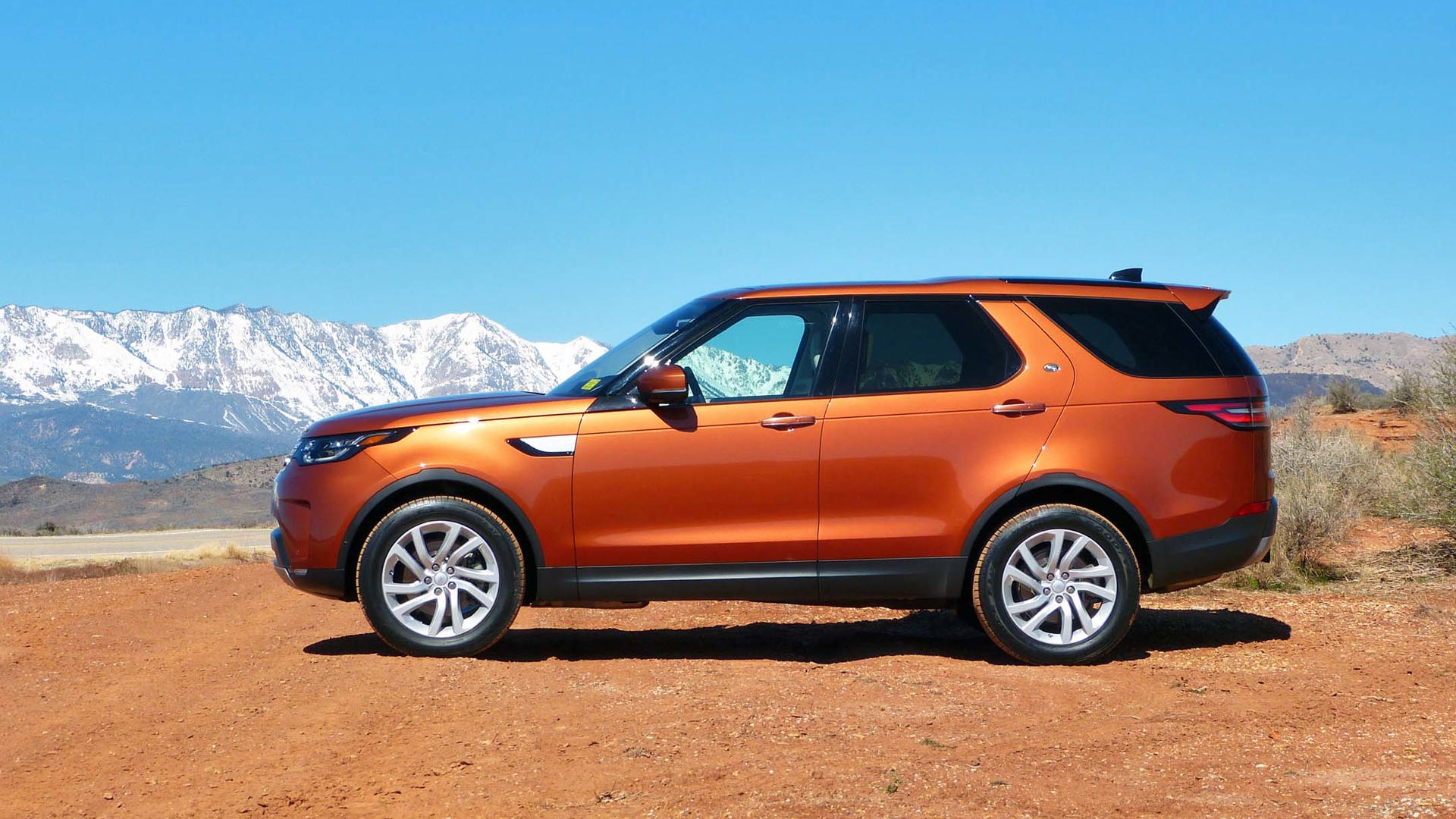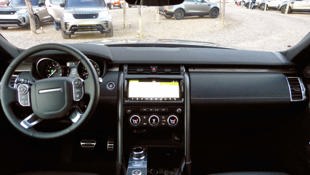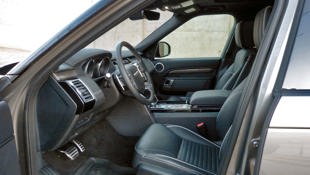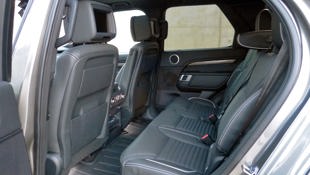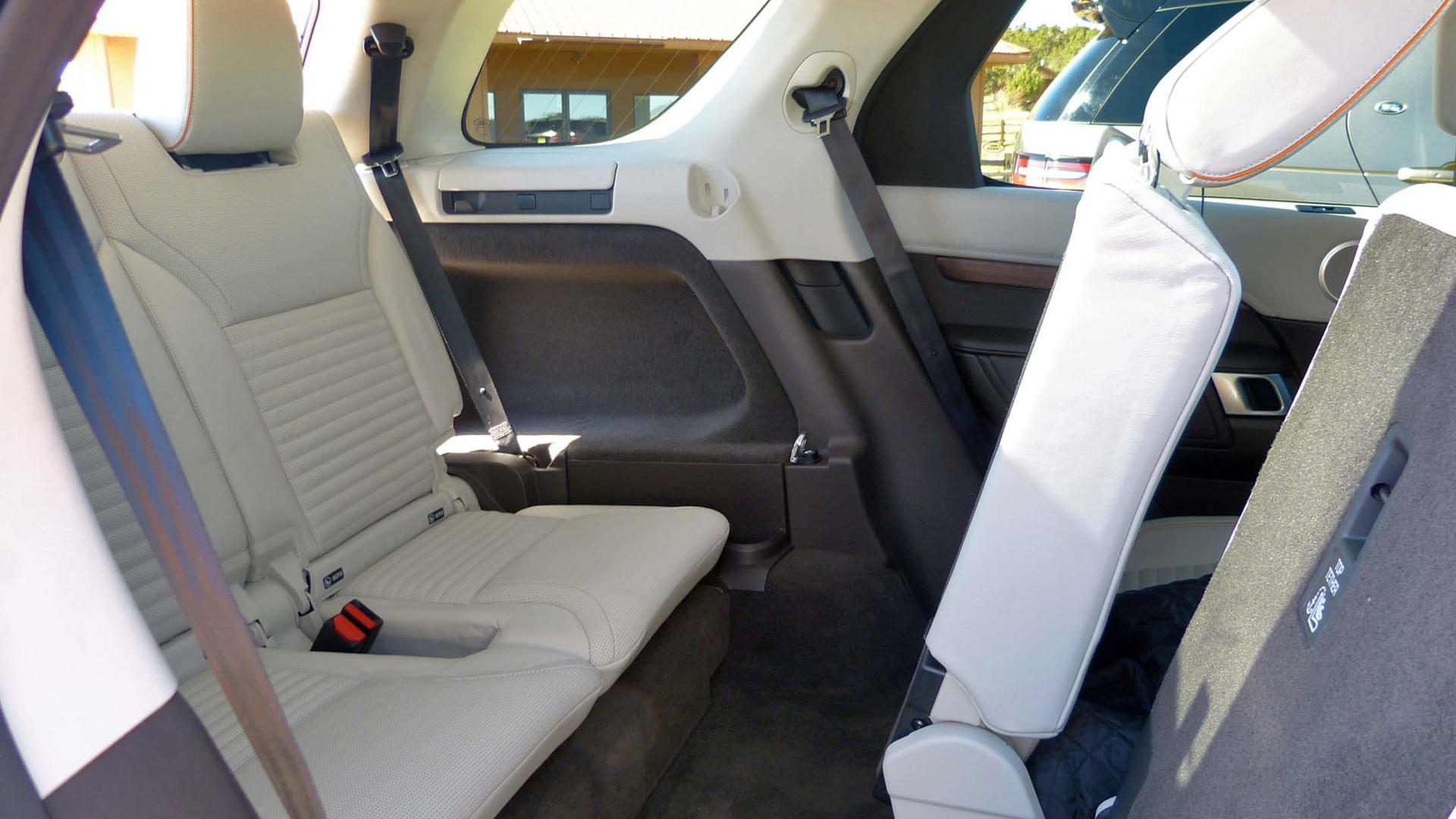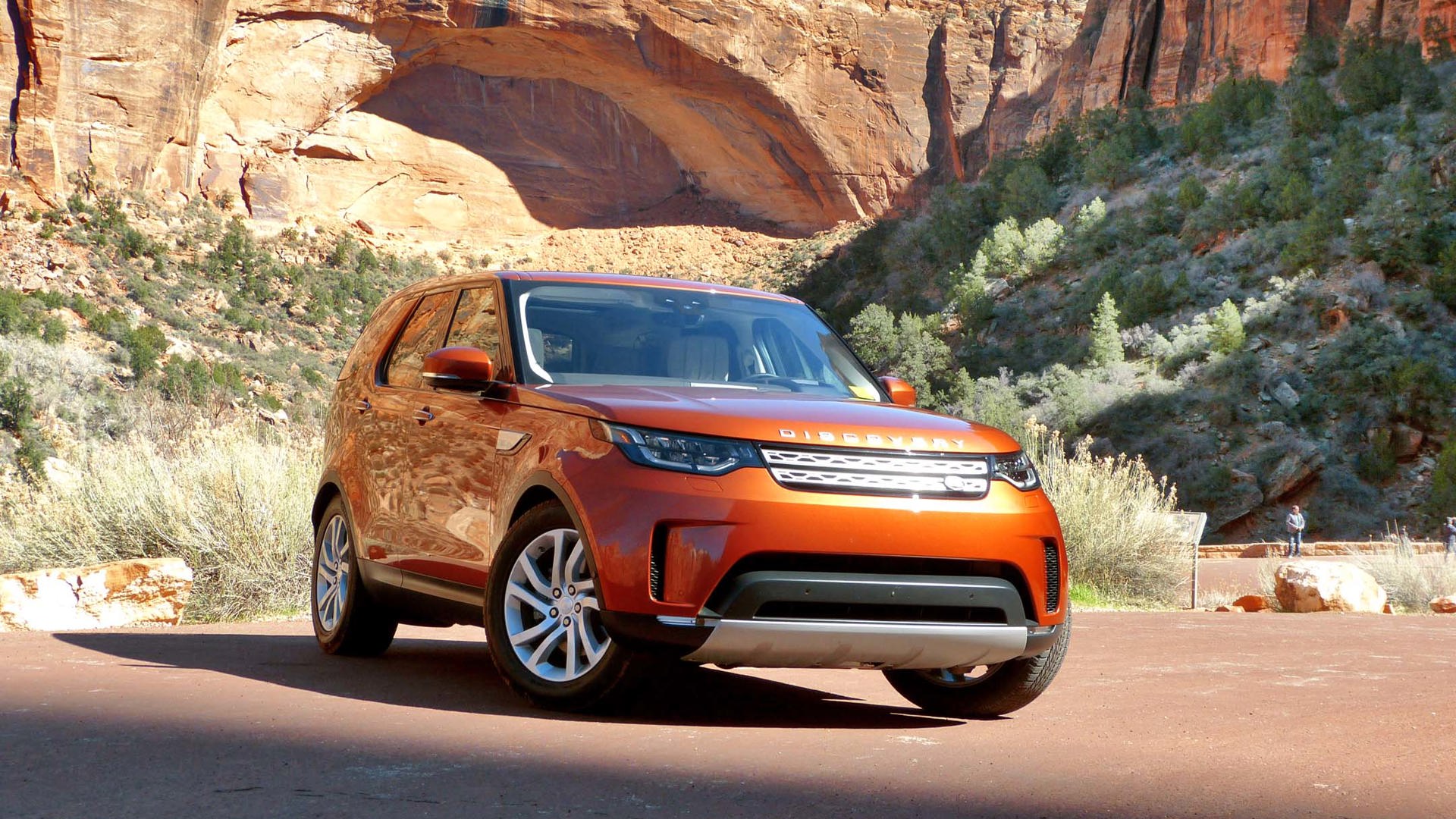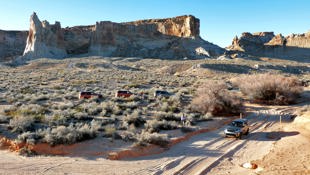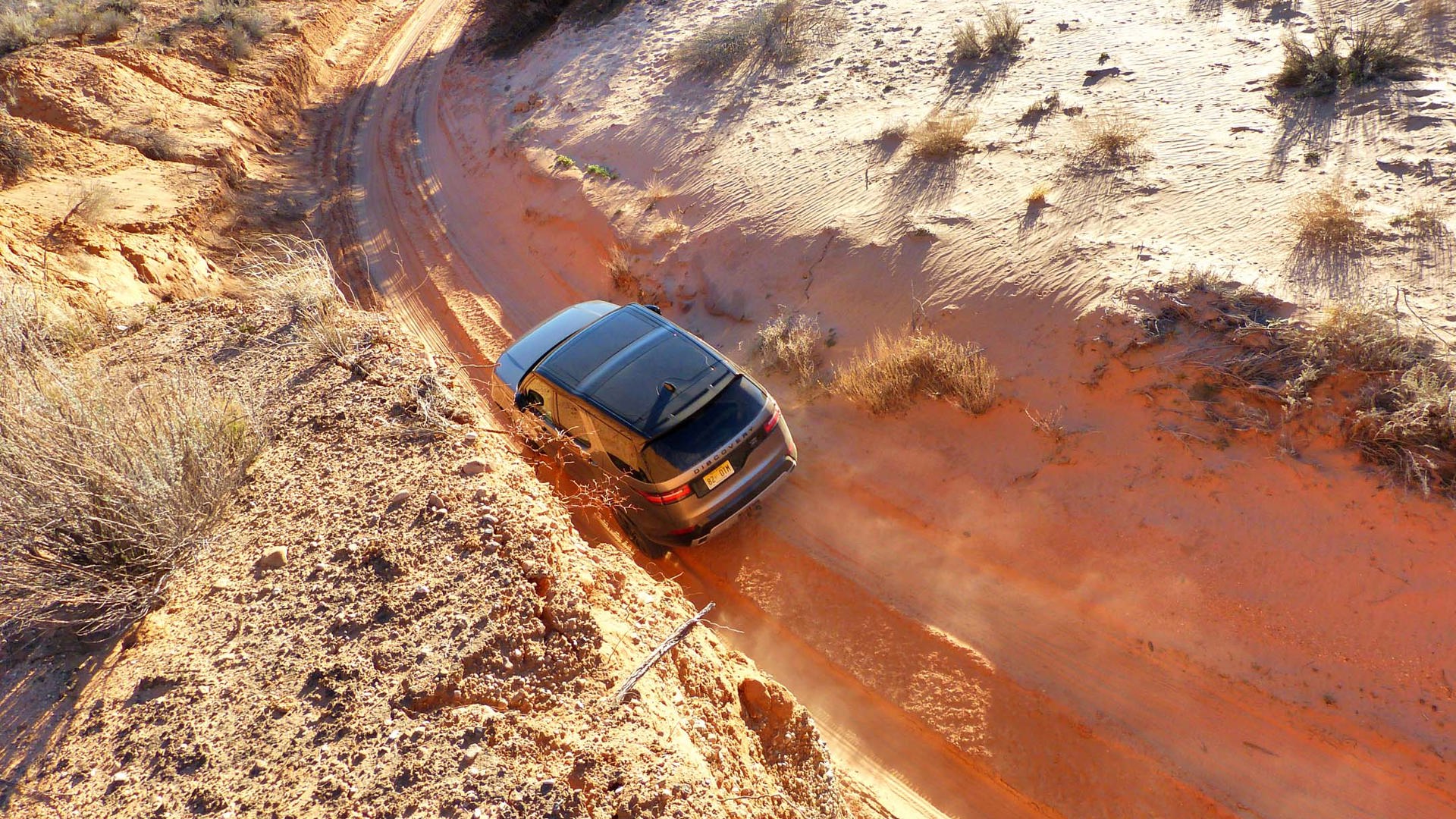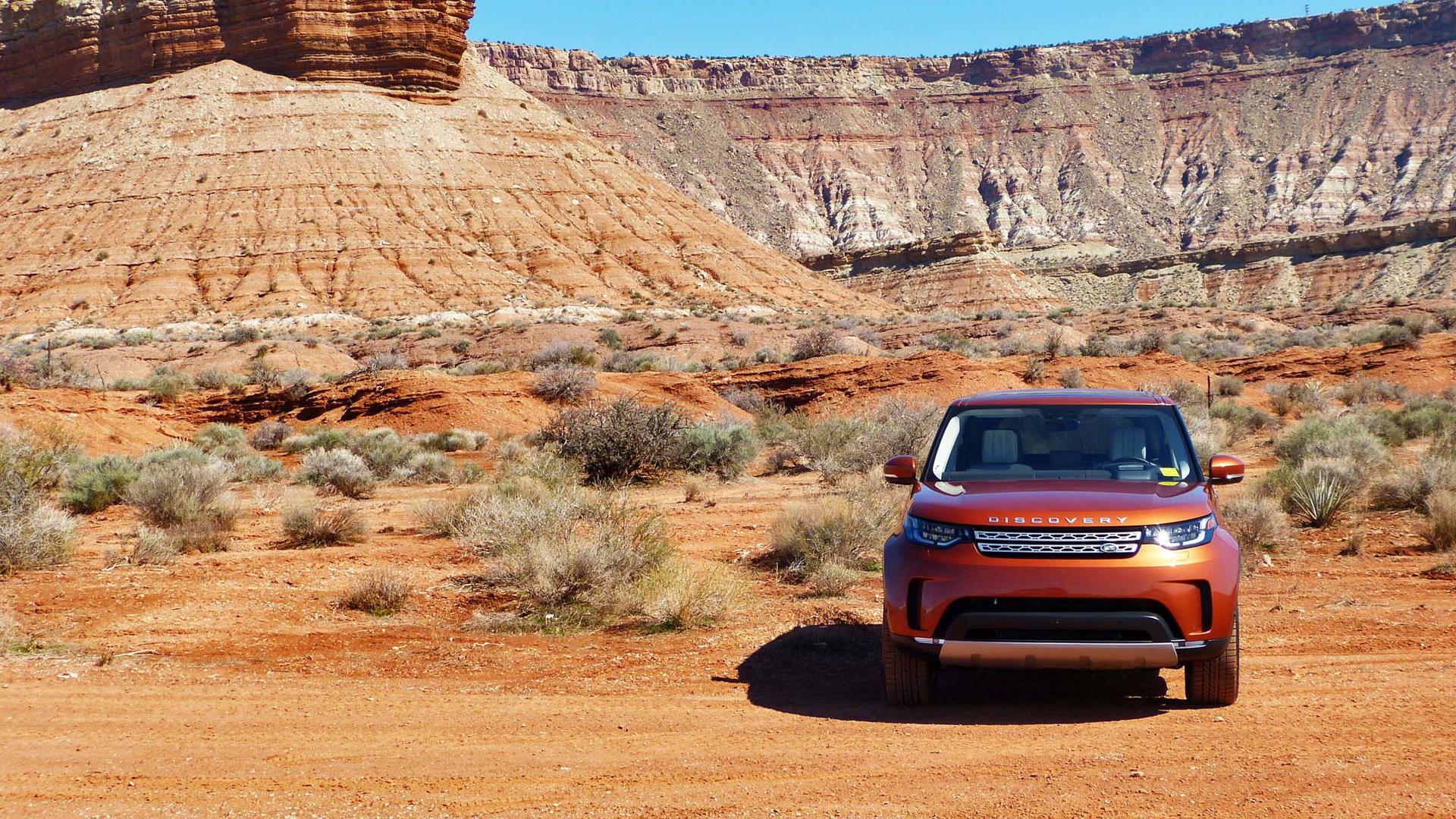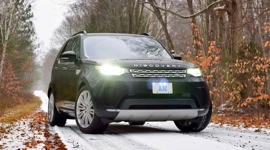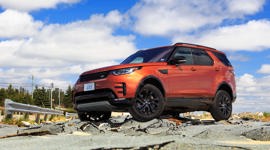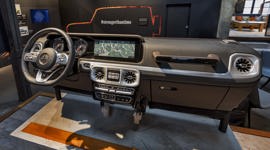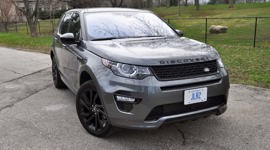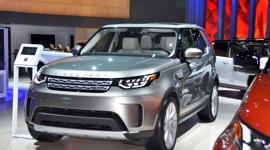“Oi! Don’t spill my coffee!”
At first glance, you might feel as if the Discovery is playing on its heritage.... You’d be wrong.
My co-driver has her arms in the air, letting her body move with the seat, trying desperately to keep the coffee cups upright. We’ve abandoned the cup holders. Sturdy as they are we’d rather take matters into our own hands. It’s the right call. After a solid 20 minutes of off-road driving in sandy, rocky, rutted riverbeds, our coffee remains where it belongs. Both our pants unsoiled. My colleague’s arms slightly tired.
The 2017 Land Rover Discovery doesn’t look like it could take on proper off-road duties. There’s no body cladding, the bumpers are soft and the lines are shapely. The new Disco doesn’t look like the rugged poacher-fighters of memory, it looks like any other hockey-family SUV out there on the road. At first glance, you might feel as if the Discovery is playing on its heritage. If you’re in a particularly bad mood, you might think that it’s unworthy of that storied history.
You’d be wrong.
A fact hammered home to me as I sat, perched atop a truly daunting rock crawl. With a two-metre drop to our left, I – in the passenger seat – was suspended some three feet in the air, pointed straight up. The front right tire was waving happily to the onlookers, also some three feet in the air. The off-road information screen helpfully explained that we were tilted 11 degrees to the side and 24 degrees fore and aft. Daunted as we were – the Discovery wasn’t anywhere near its 35 degree side-tilt limit, nor its 45 degree ascent/descent ceiling.
We switched to wheel view, which helpfully told us that the front right wheel had no traction at the time. This was unsurprising, given that even with its full 500 mm of axle articulation taken up the wheel was a solid metre off the ground.
The Land Rover rep then helpfully demonstrated how easily the doors open. By the by… Discovery doors are heavy when you are fighting gravity.
Land Rover wasn’t mucking around here, this was a proper test of vehicle and nerves. The setting? Utah and Arizona – and the most beautiful, heart-stopping scenery I’ve seen.
We’d tackle canyons, sand dunes, corrugated service roads and mountain peaks. We’d see jack rabbits, deer, and even a coyote. Martian landscapes of sand and scrub and rock leap from around every corner and steal your breath away: the Discovery quietly humming away on the tarmac as we ate up mile after mile of mythically vivid scenery.
We traversed from dry desert canyon floor to snow-covered mountain peak on a two-day road trip peppered with tests of car and driver.
It’s remarkable that nobody once complained. Okay, I tell a lie: I complained. Not about the driving, but about the infotainment system. Slick, good-looking and on-paper well-featured, JLR’s system nevertheless remains slow, glitchy and downright obstinate. At one point we had to stop the car, shut it down and re-start three times to reboot the system properly. At another point, it simply shut itself off mid-drive until we pulled over and re-booted.
A software update is expected, which may mitigate this problem.
But nobody complained about the drive time despite two long days of intense wheeling. I enjoy maximum drive time but even the most jaded of my colleagues ended both days bright-eyed and bushy-tailed; unanimous in our praise of the soft ride, comfortable, supportive seats and Range Rover-quiet cabin.
Hammering along corrugated service roads at around 100 km/h, the Discovery was steady and composed, soaking up the bumps with total aplomb. In the sand, it was a warrior, striding through the grit without breaking a sweat. The Discovery lives for the wide open road – and when the road runs out, it gets even more excited.
Mountain roads will trigger an enormous amount of body roll, as the 2,200-plus kg chassis shifts around on the long-travel air suspension, but even as the cabin tilts the tires feel connected and stable.
The Discovery will come in four trims: SE, HSE, HSE Luxury, and First Edition. Diesel lovers will be pleased to know there is a 3.0L turbo-diesel good for 254 hp and 443 lb-ft of torque – all of which is available at 1,750 rpm. The supercharged petrol engine V6 generates 340 hp at 6,500 rpm and 332 lb-ft of torque at 3,500.
The Diesel is not available on the $61,500 SE trim but is a $2,000 premium on the $68,500 HSE, $75,000 HSE Luxury and $82,500 First Edition trims.
You may well recover some of that at the pump. The Diesel is rated at 11.2/9.0/10.2 L/100 km city/highway/combined, handily beating the regular petrol engine’s 14.7/11.2/13.0.
From inside the cabin, the diesel engine is quiet and still, but open the windows in any sort of tunnel or near any wall and you’ll soon remember that this is a diesel. Likewise early throttle response is lukewarm.
The petrol engine is much more quiet and smooth from the outside and feels strong during passing maneuvers. After driving both back to back it was the petrol engine I much preferred.
Both are paired with an eight-speed ZF transmission. Gear ratios are the same throughout both boxes with a final drive ratio of 3.73 in the petrol and 3.21 in the diesel. The four-wheel drive system is permanent with a locking centre differential while the optional Terrain Response system (standard on First Edition models) adds a locking rear differential.
When fitted with air suspension the Discovery can ride at three different heights.
There’s an automatic access height for shorties like me, which helps with egress and ingress, and the final off-road height gives 283 mm of ground clearance. With a departure angle of 28 degrees and an approach of 29.5, the Disco will drop down into most rivers and wade comfortably through 900 mm of water. The air suspension helps soak up even the most daunting of bumps.
Out in the sand, I was surprised to learn that the petrol engine was the better choice. Its free-revving nature allowed us to maintain wheel spin to power through the sand long after the diesel cars had turned back down the dune. On the rock crawls though, there was no substitute for the loping, easy torque of the diesel.
Neither engine has an impact on cabin noise on the highway. With the windows up and sealed your passenger will be able to easily hear you singing along to MMMBop on the radio no matter the trim. So you know, don’t. Because they’ll tease you. Mine did.
Part of the reduction in wind noise comes from the pounds and pounds of sound deadening material – enough to contribute to the Disco’s 2,230 kg curb weight in diesel trim (2,155 as a petrol). Part too is a reduction in drag co-efficient from .40 to .35 courtesy of innovative vents in the bumper. Those grills and intakes are all functional – though not for cooling or air intake. They are drag reduction devices.
Speaking of passengers – they too will find the Land Rover Discovery shines. The intelligent seating system fitted to HSE Luxury trims and higher allows for up to 23 seating configurations and a maximum capacity of seven. Land Rover will proudly tell you that adults will fit in all three rows. Though the 6'4" behemoth I deputized to test this theory found it hard to actually get into the third row even with the second row slid up to the most forward point in its 450 mm of travel. Once ensconced, he reported sufficient leg and head room before asking, “When would anyone except kids use this row anyway?”
With kids in mind, Land Rover has lowered the back support of the second row and front row to give those in the back seats a clearer view through the front window. The video screens in the headrest have been scaled and positioned in order to minimize car sickness. If they are sick, they’ll discover covered storage bins in all three rows.
The dual sunroofs are a Discovery staple but we think most would prefer a proper panoramic roof. Still, one could always opt for the airy new Range Rover Velar, or Evoque Convertible.
The amount of storage is staggering. The centre console cup holders slide forward to expose a recess capable of holding four iPads, and the centre console bin lid rotates to provide armrests even when it’s open. Under that lid, there’s a fridge, capable of cooling four or more bottles of water.
You’ll find nine USB ports, a Wi-Fi connection for up to eight devices (but you’ll need to keep paying the subscription) and six 12-volt charging ports. There’s one 110 V power outlet in the back of the console too.
The only thing there is no storage for is the tonneau cover. It can be slotted into place down on the cargo floor behind the tailgate, but not hidden away. That space is instead taken up by a full-size rear tire and a few hundred-thousand metres of Cat-5 network cable which powers the Intelligent Seating system.
Every second- and third-row seat and head rest can be controlled from a panel in the trunk or from the centre stack courtesy of the Intelligent Seating system. The system operates fairly slowly, but impressively, and will even sense weight and resistance to avoid damaging luggage or passengers.
The iconic Land Rover tailgate is now rated for 300 kg, making it a useful step for getting changed after the beach or a muddy hike. It’s also good for camping and picnics. On that issue, the Land Rover Discovery will tow 8,200 lb.
Should you be off to the beach or on a hike the Land Rover Activity Key is a handy wrist strap you can wear anytime you don’t want to take your keys with you. To unlock the key, you simply touch the D (of “DISCOVERY”) on the tail gate. We found it took a while to register, but it’s cool and useful tech. Sadly, it’s only available on the top trim First Edition.
For $61,500 Discovery SE buyers will get standard coil-spring suspension or optional air suspension, five seats, 19-inch wheels, a fixed sunroof, rear parking sensors, 12-way leather seats, dual-zone automatic climate control, keyless entry, foot-wavy power tailgate and Homelink.
At $68,500 Discovery HSE adds LED headlights and fog lights, 20-inch wheels, 380 Watt Meridian Audio, navigation, three-zone climate control, memory seats, sliding sunroof, InControl Remote – a vehicle control application for your phone – wood trim, 360-degree parking sensors, power inner tailgate and in-dash storage behind the climate-controls.
Want standard air suspension and seven seats with intelligent seat fold? The $75,000 HSE Luxury gets those, as well as a standard two-speed transfer case (high and low range), different 20-inch wheels, 825 watt sound system, 16-way Windsor leather seats, front and rear heated seats, heated steering wheel and interior mood lighting.
Fully loaded at $82,500 the Discovery First Edition will gain you Terrain Response 2 and All-Terrain Progress Control, lane-keep assist, autonomous emergency braking, park-assist 360-degree camera, blind-spot detection, Intelligent Speed Limiter with traffic sign recognition, Activity Key, heated windshield, auto headlights, loadspace cover, power adjustable steering wheel, cartography interior trim, 21-inch wheels, and metallic paint.
Here in Canada, where average transaction rates are high, you can expect to find the HSE Luxury and Discovery First Edition trims in most driveways. And while it’s a pricey proposition, there’s a lot of car here for the money.
To say this vehicle is a slam dunk would be an understatement.
The Discovery is a gorgeous car, inside and out. It drives superbly over long distances.
It’s about as rugged as a Wrangler or a G-Wagen, and as practical and versatile as a Honda Pilot.
Land Rover has already taken 20,000 global pre-orders of the new Discovery – and that’s before the first published reviews landed.
As a driving enthusiast, it was the off-road chops that blew my mind – tackling terrain I’d never consider ordinarily with total nonchalance. The Discovery made it easy, even bordering on boring in some places, as it strode confidently over the landscape.
As a parent, I was enamoured by the clever use of storage space and the well-thought-out seating and appointments within the cabin. Never would a child be bored, never would I be bested by an Ikea run. No matter how odd the shape, the seats would fold in a way that allowed me to take furniture and child home at the same time.
And in the event of a hurricane, earthquake, meteorite strike, flood or zombie apocalypse, I’d know that the Land Rover Discovery would carry me comfortably to safety.
Pricing: 2017 Land Rover Discovery
SE – 3.0L supercharged V6, 340hp
$61,500
HSE – 3.0L supercharged V6, 340hp
$68,500
HSE Td6 (diesel) – 3.0L V6 turbo-diesel, 254hp
$70,500
HSE Luxury – 3.0L supercharged V6, 340hp
$75,000
HSE Luxury Td6 (diesel) – 3.0L V6 turbo-diesel, 254hp
$77,000
First Edition – 3.0L supercharged V6, 340hp
$82,500
